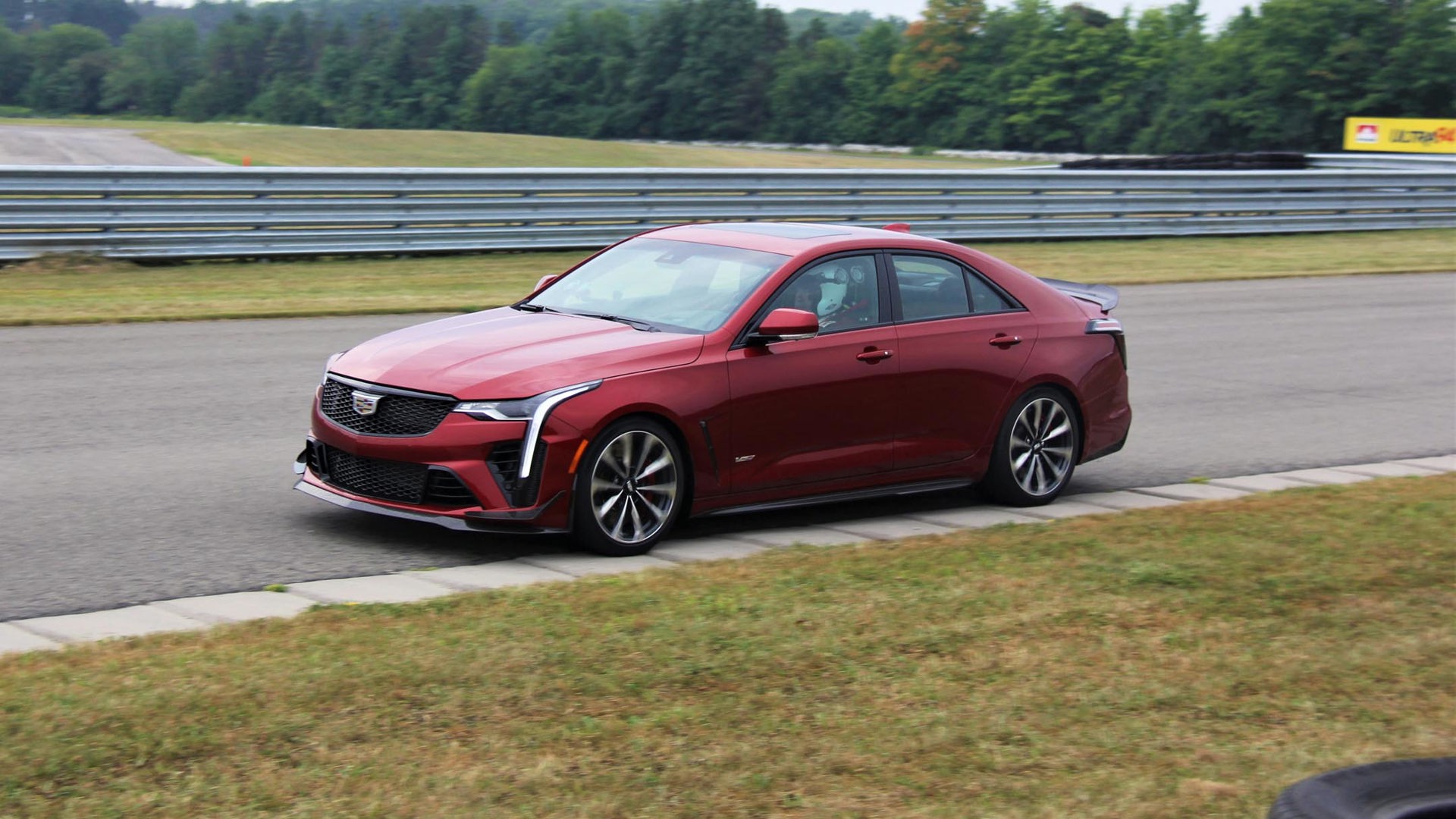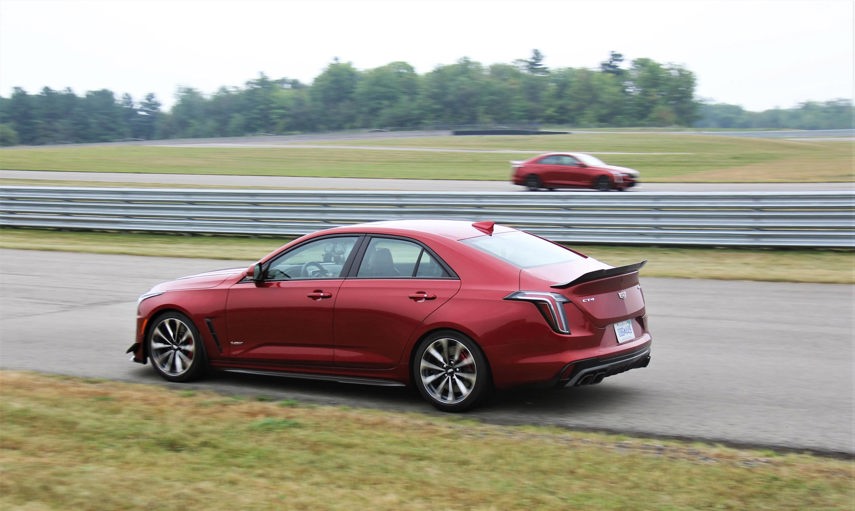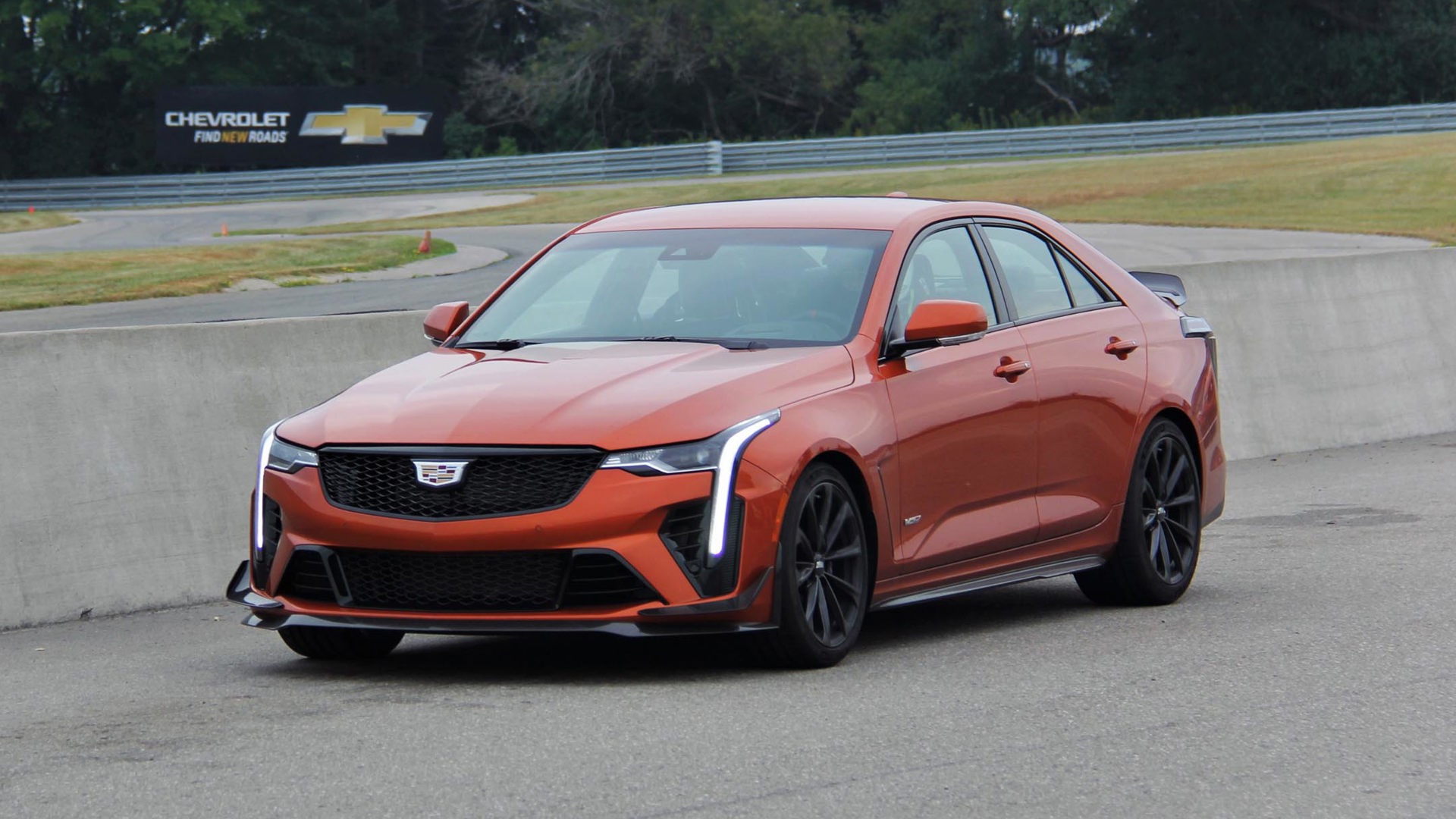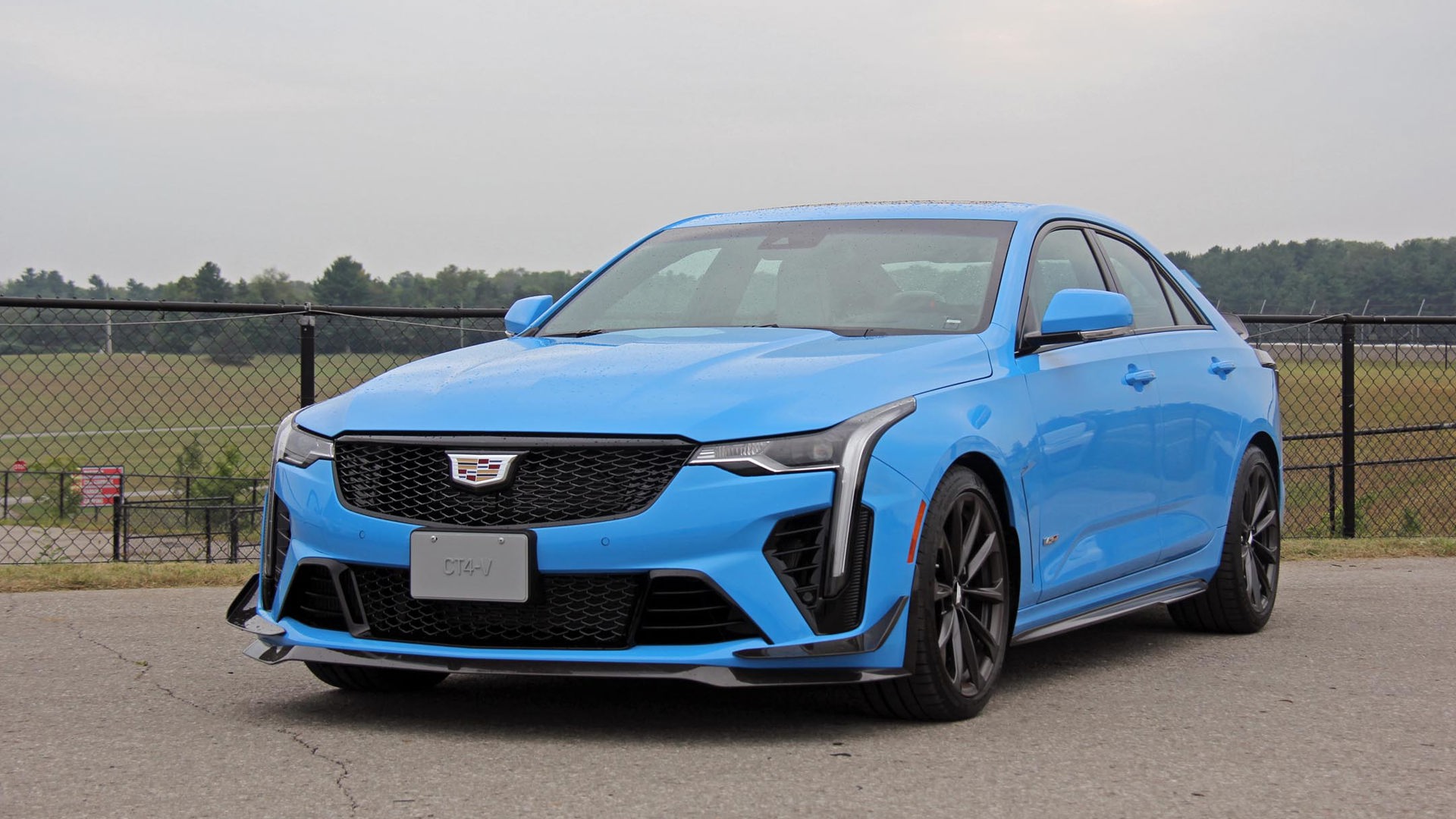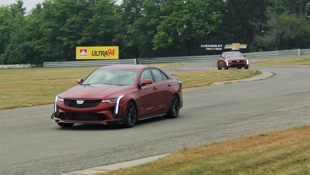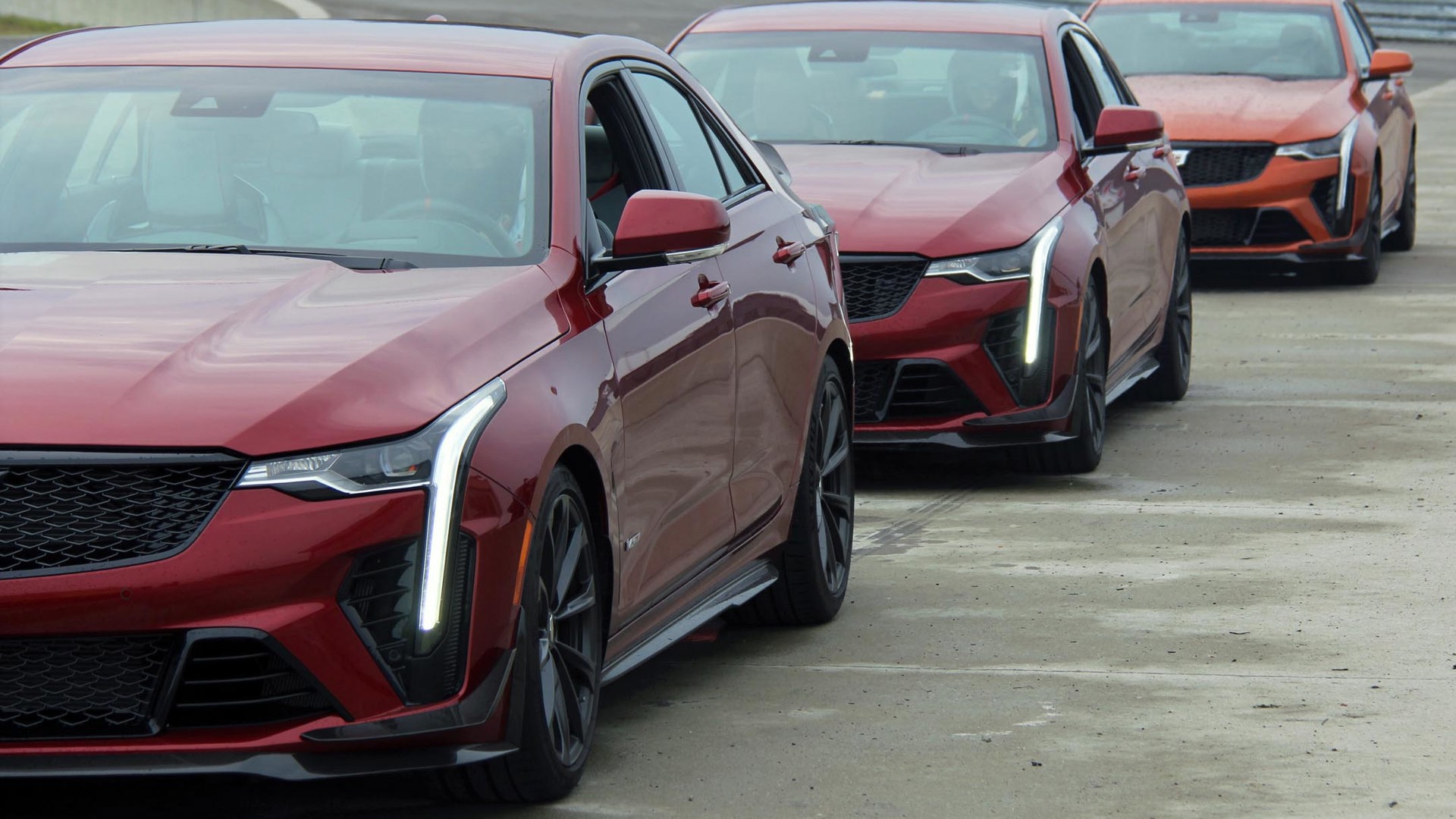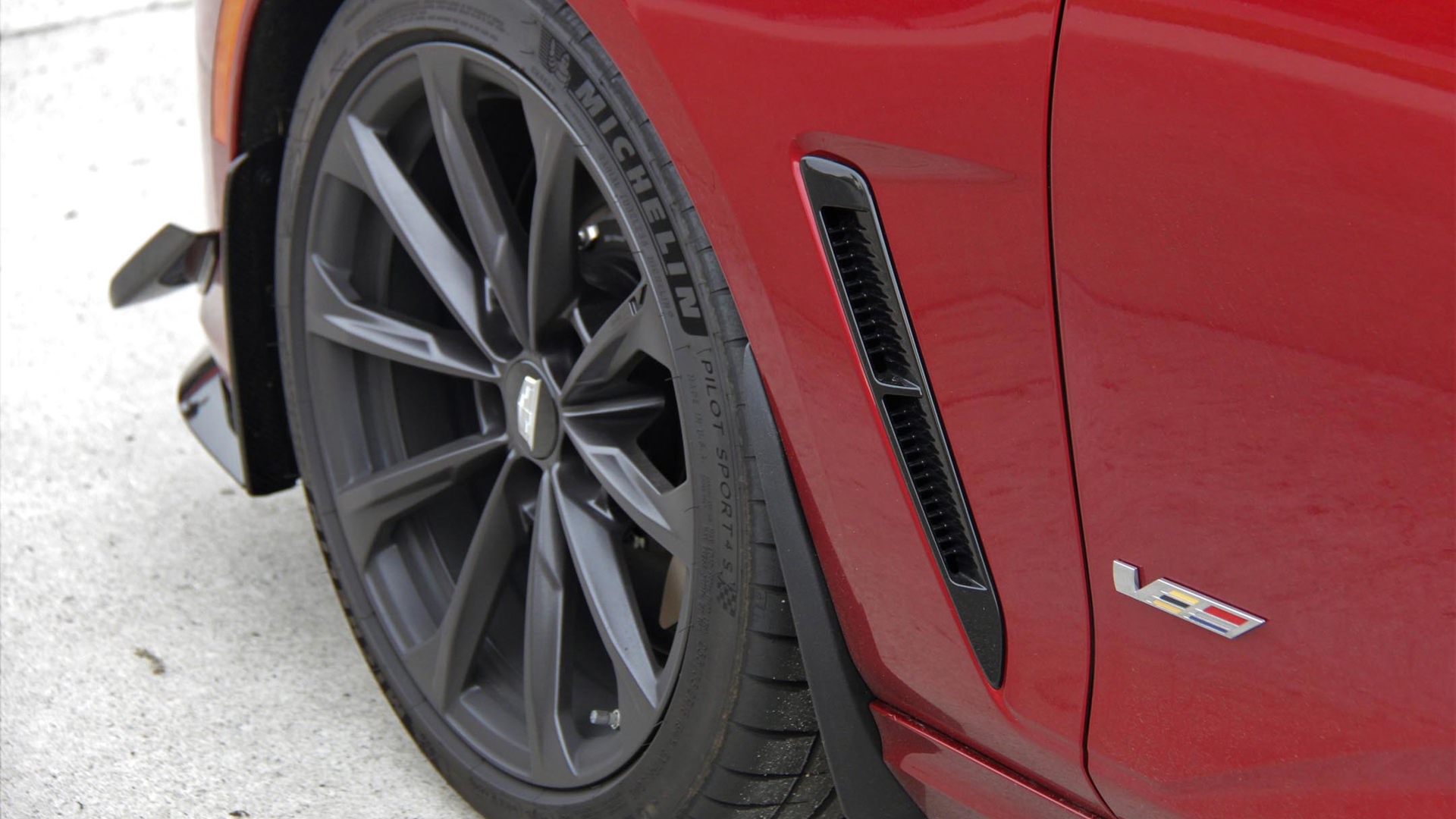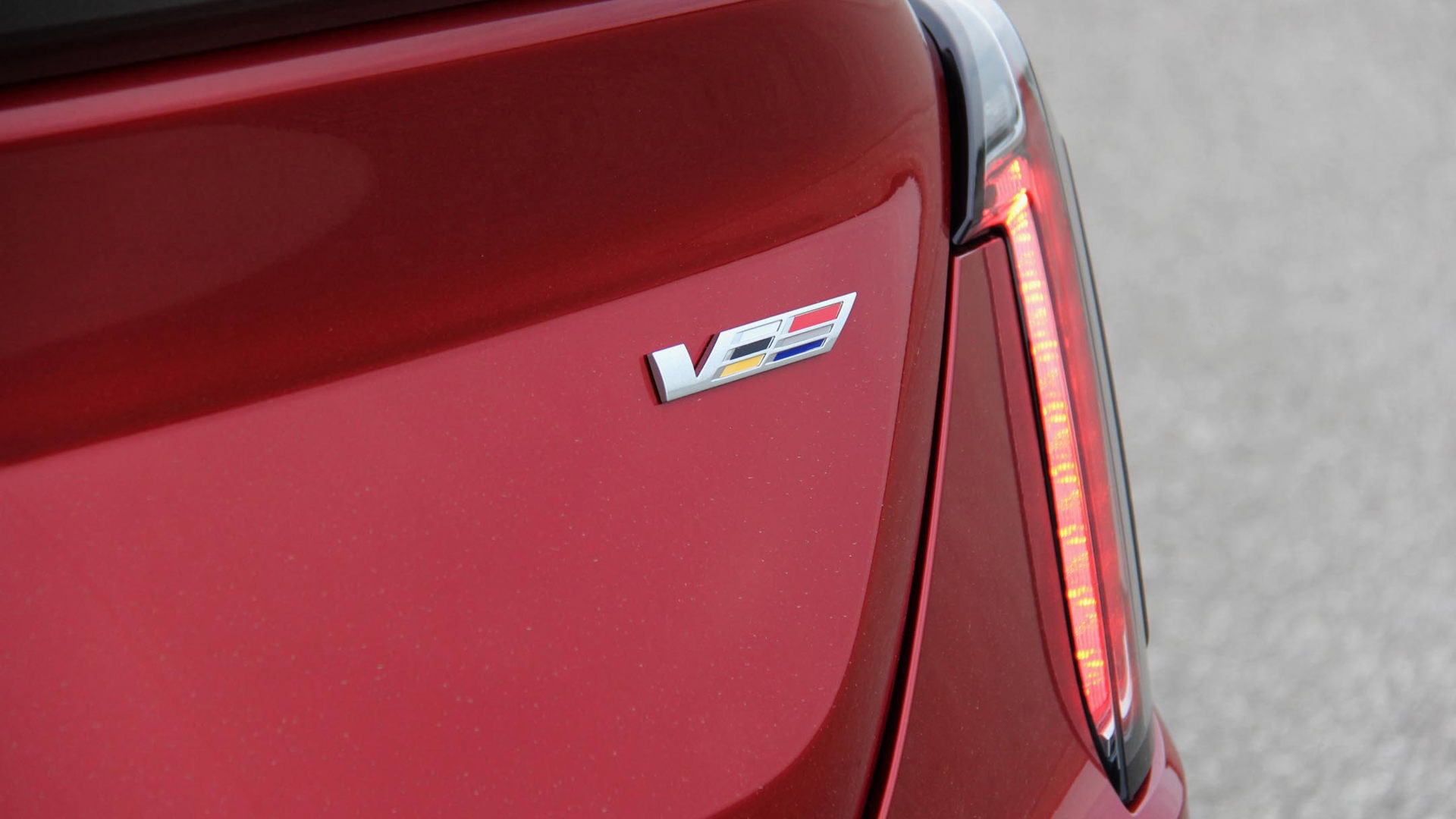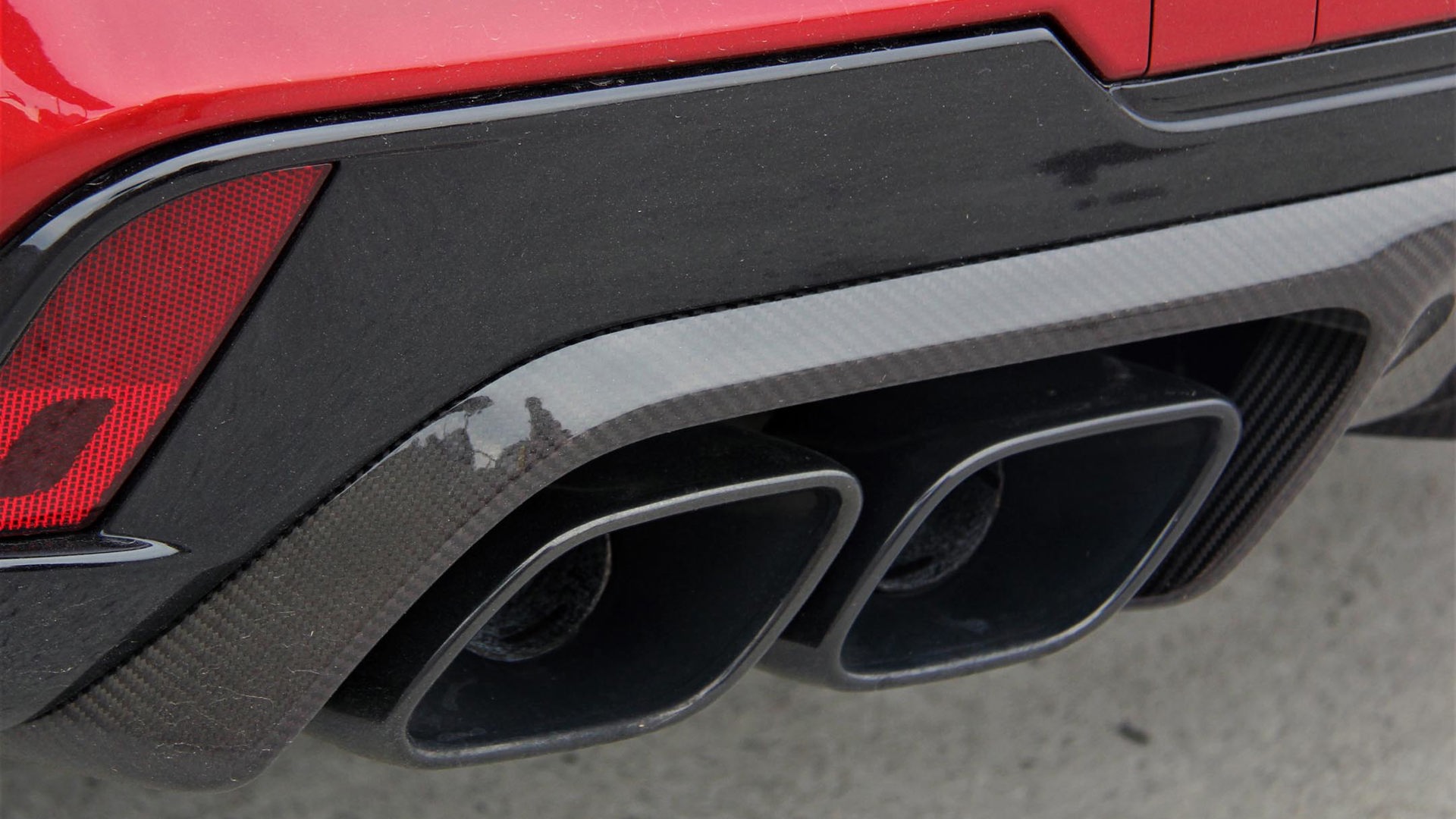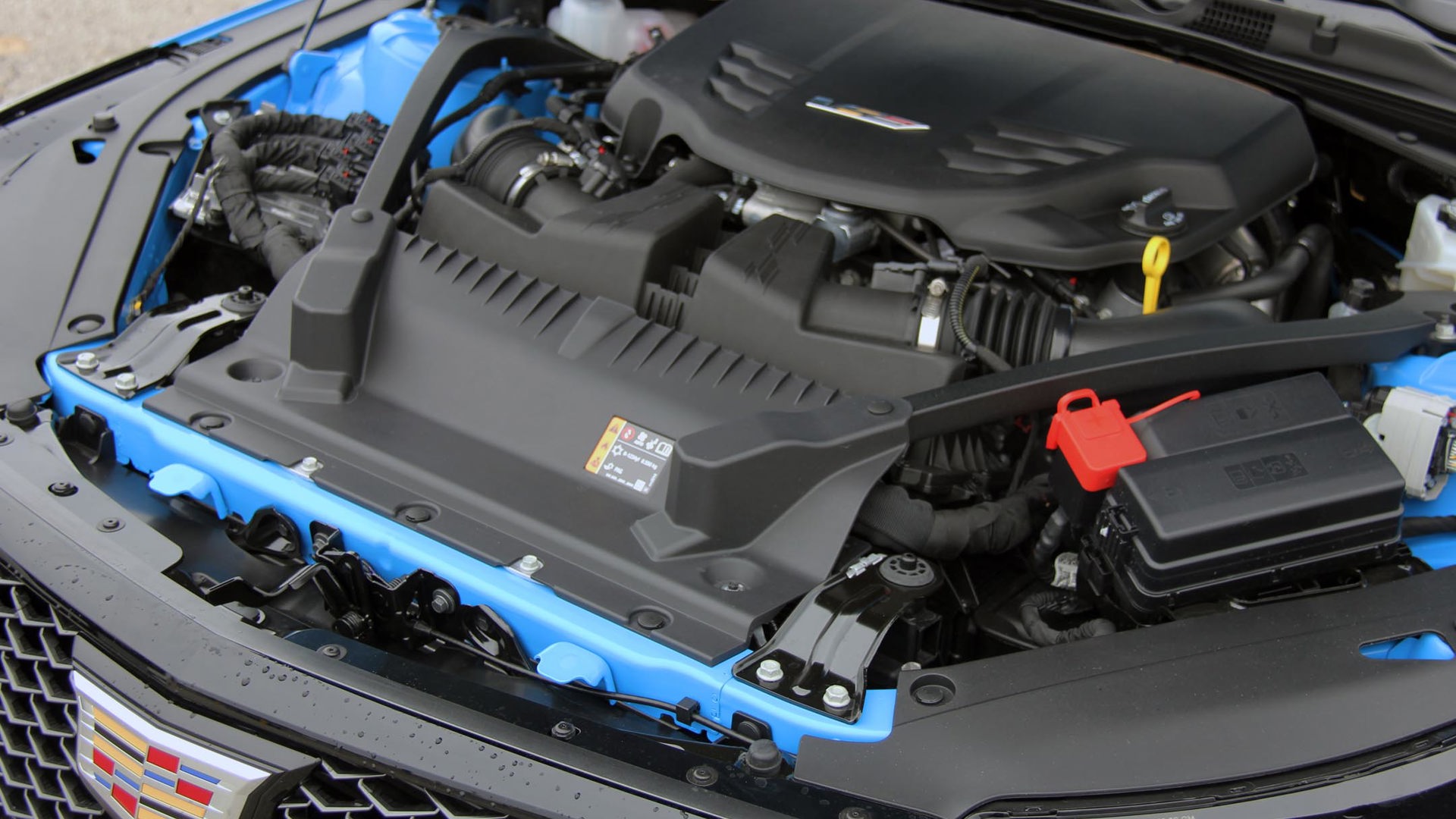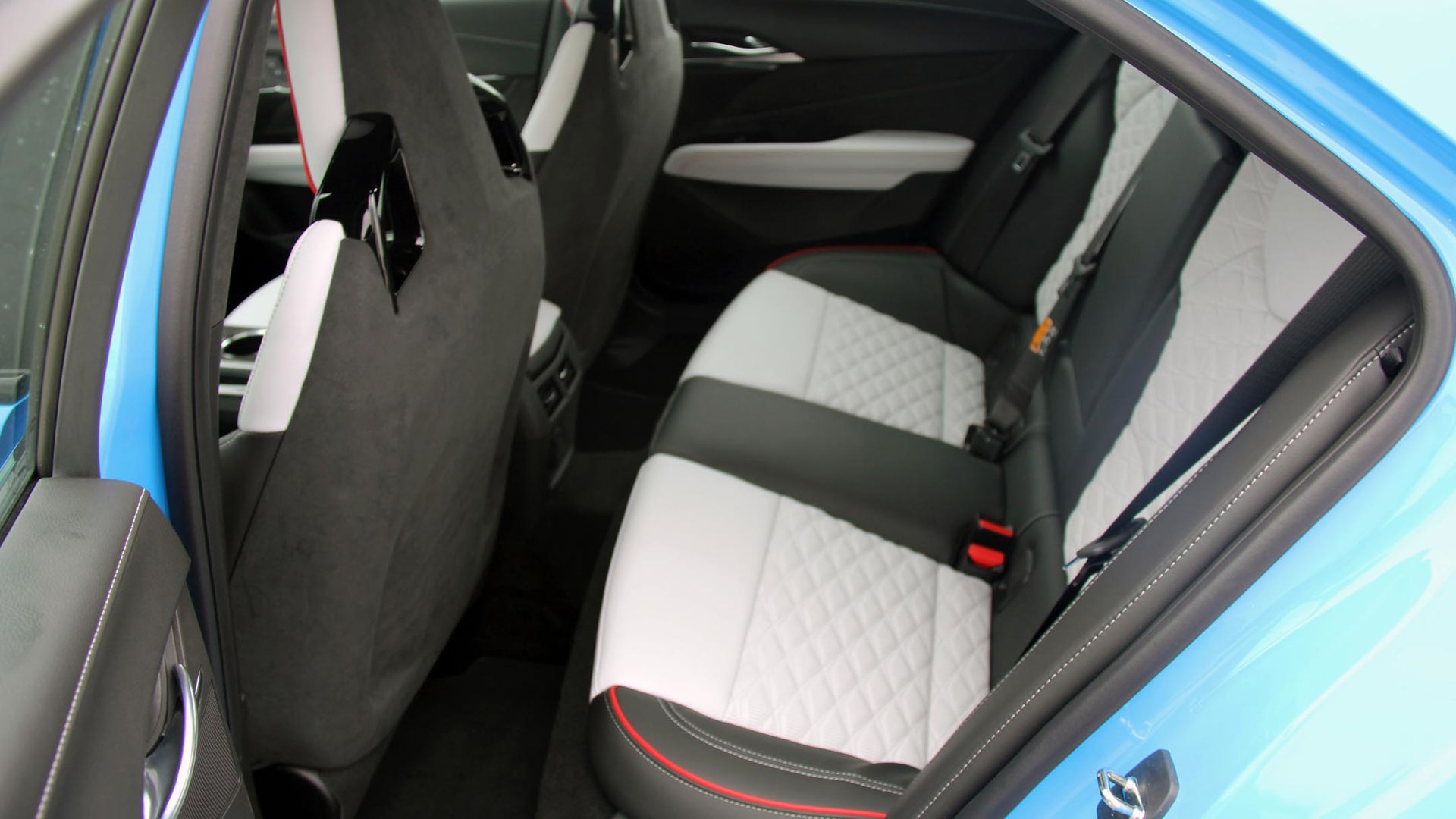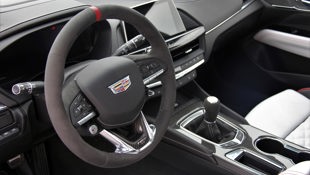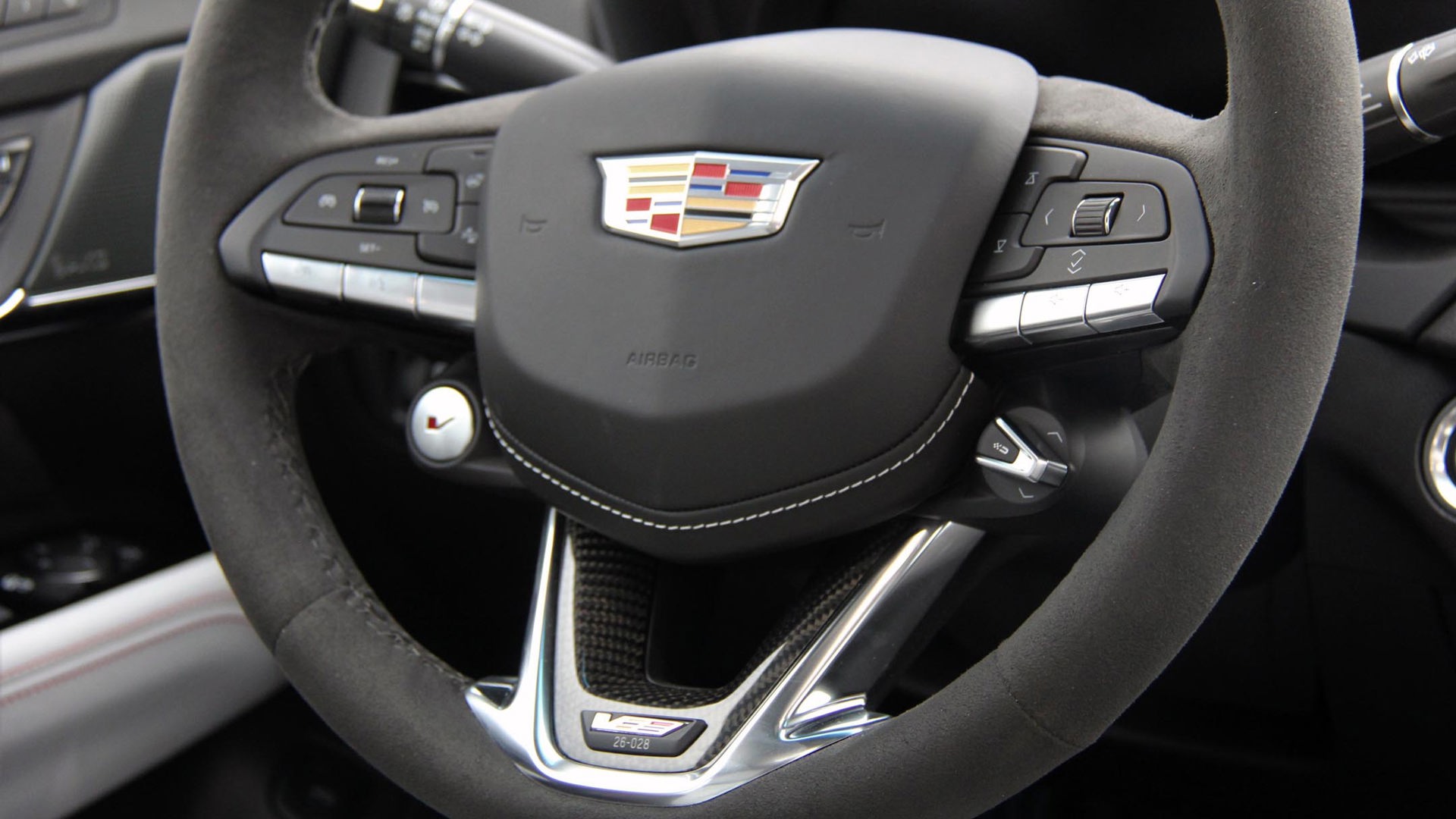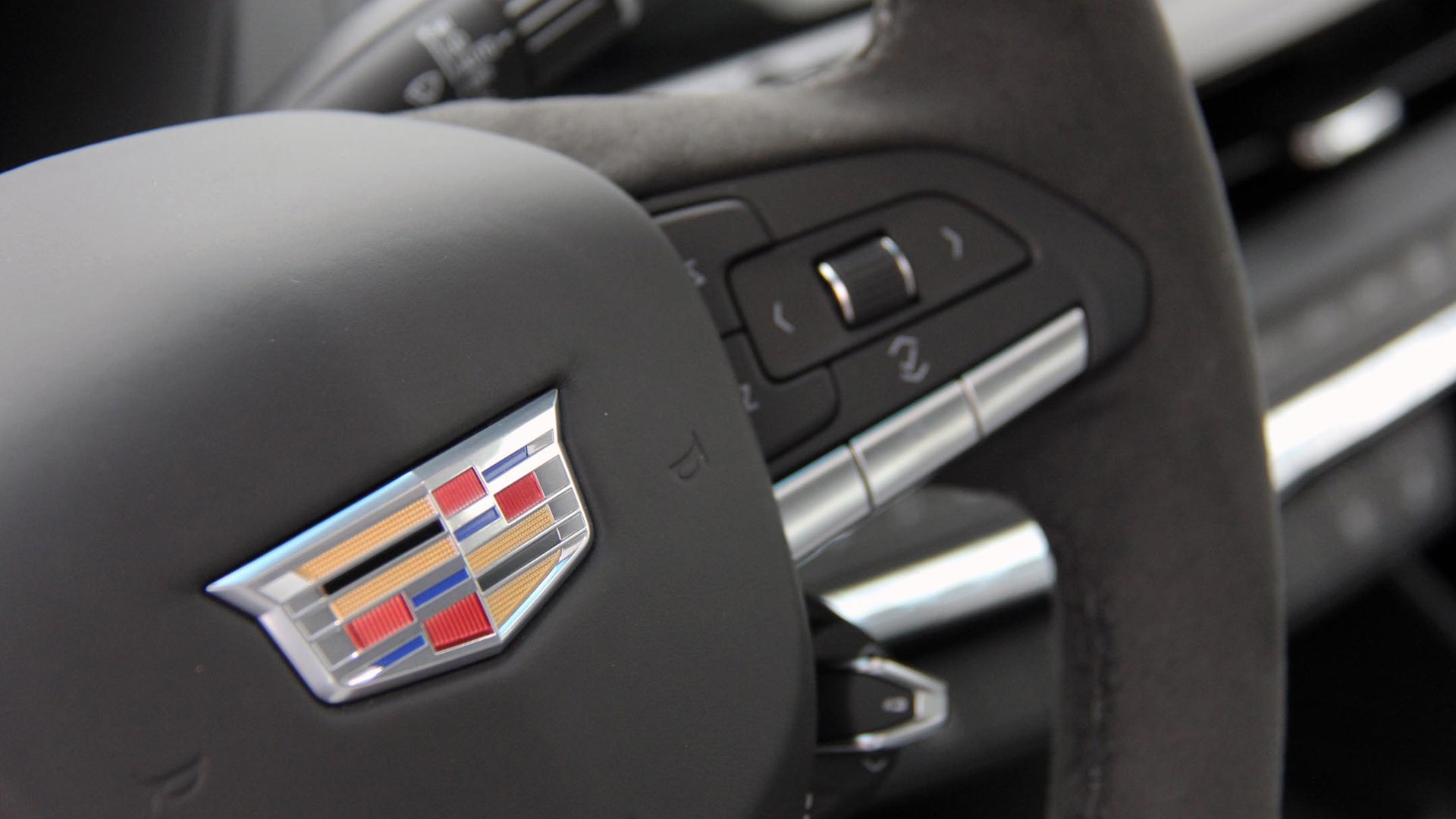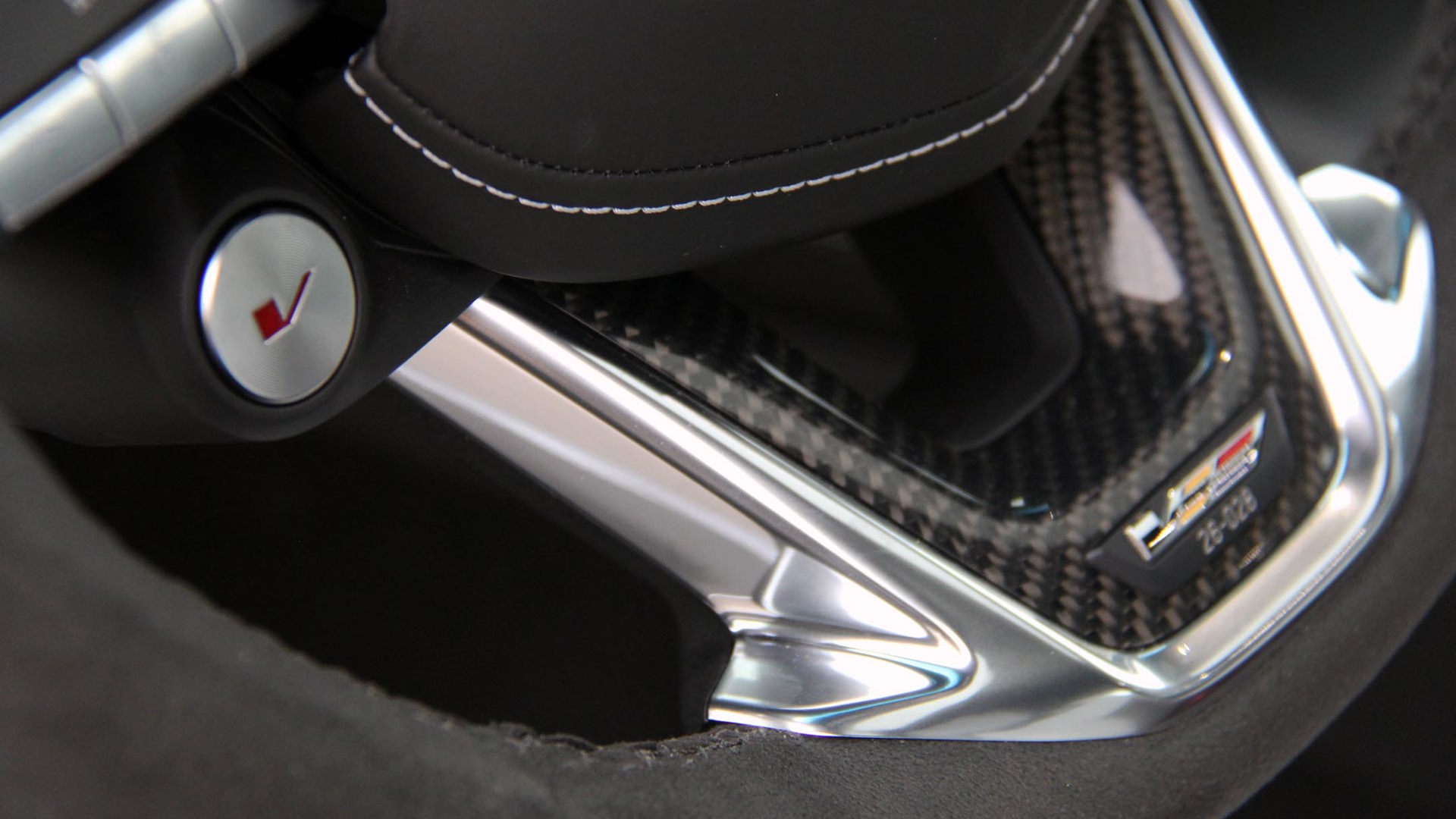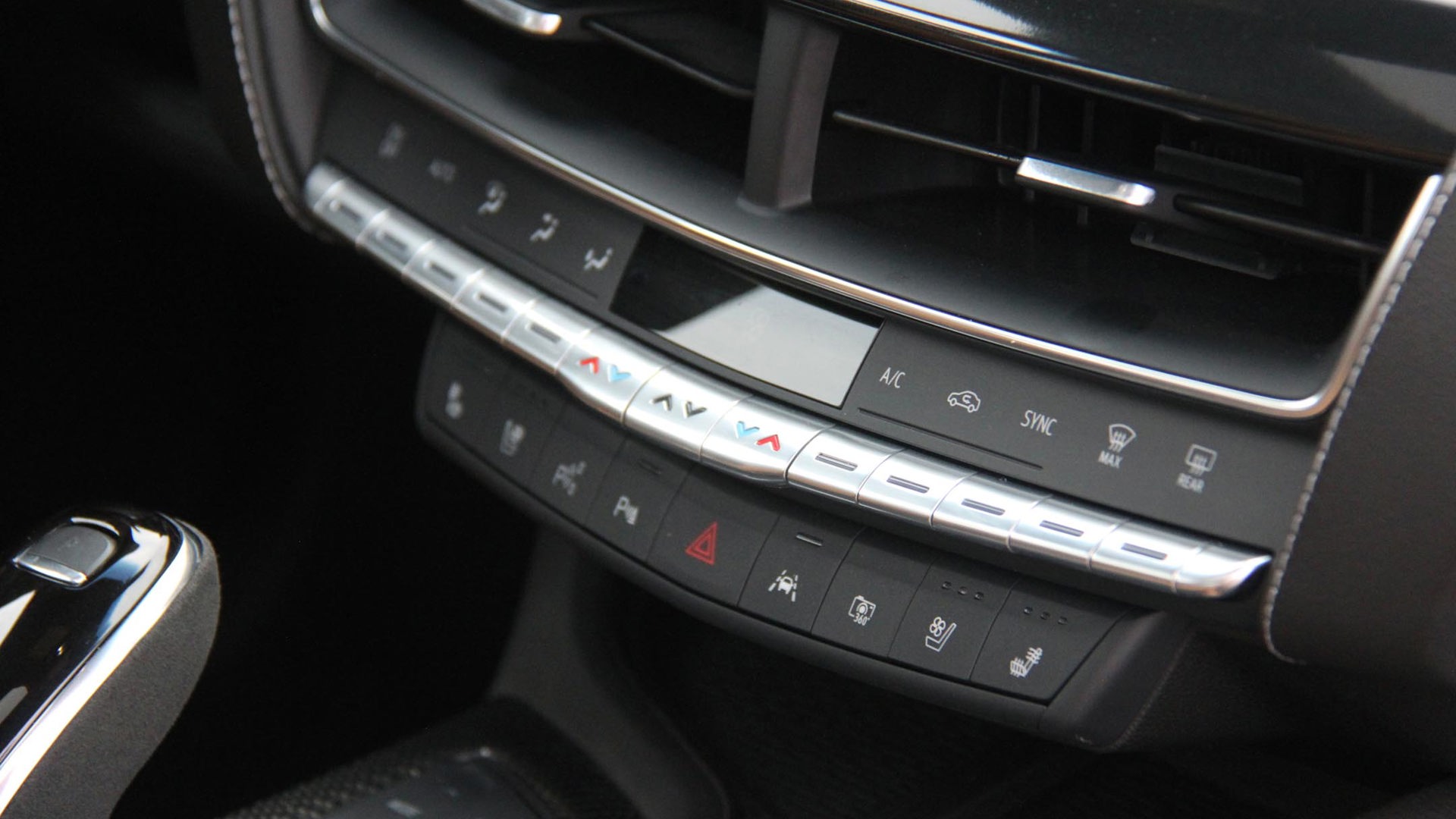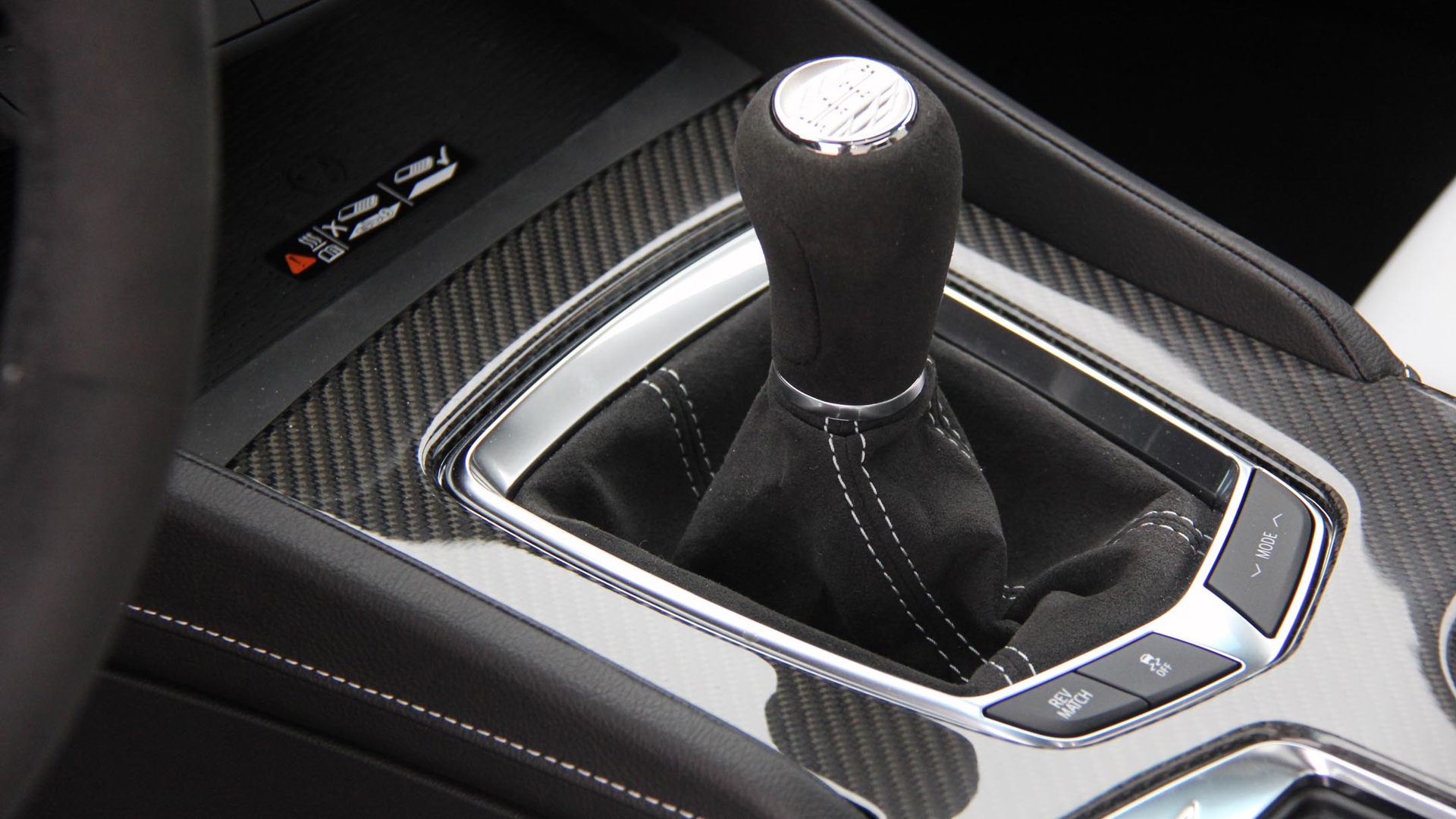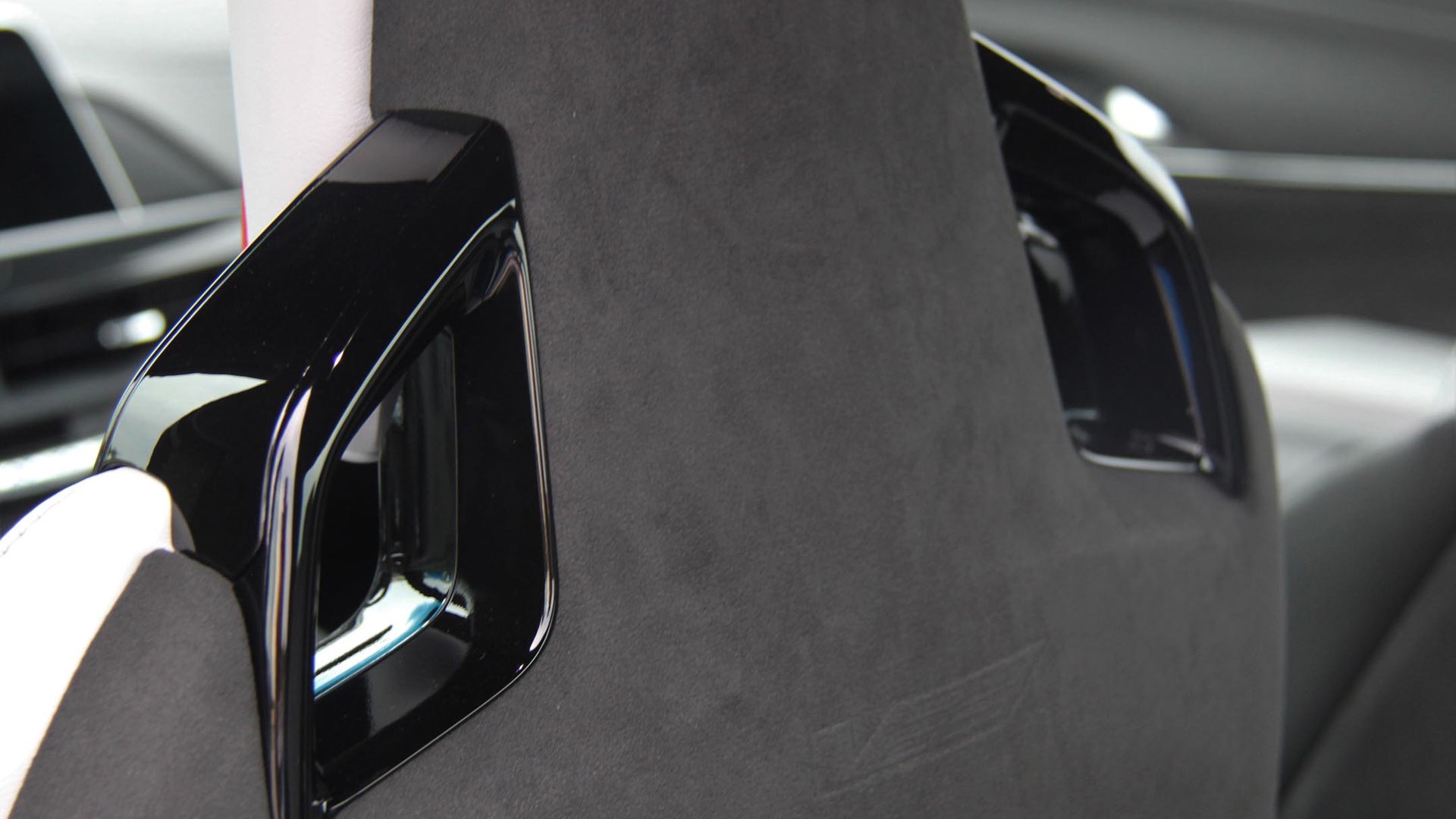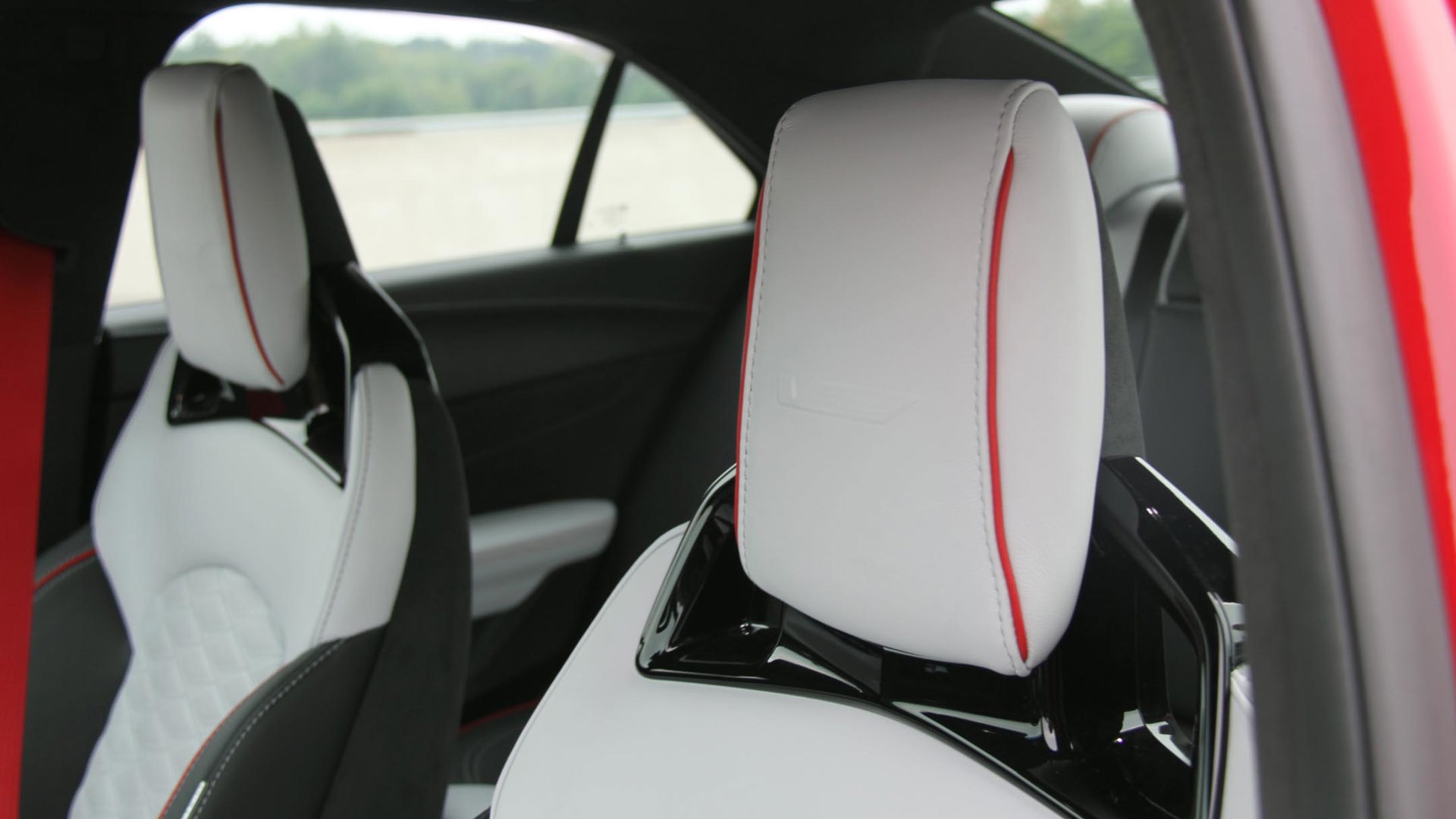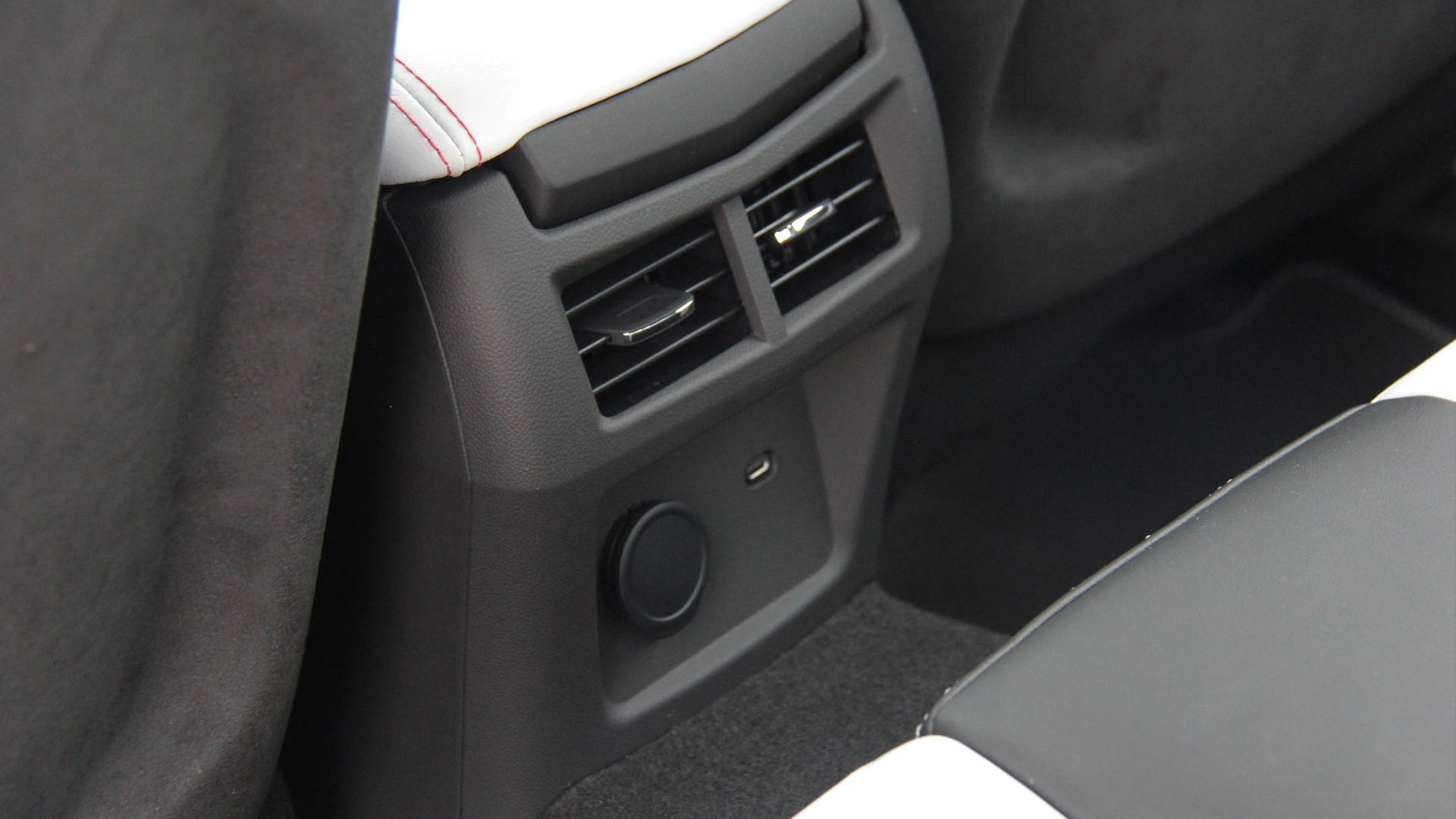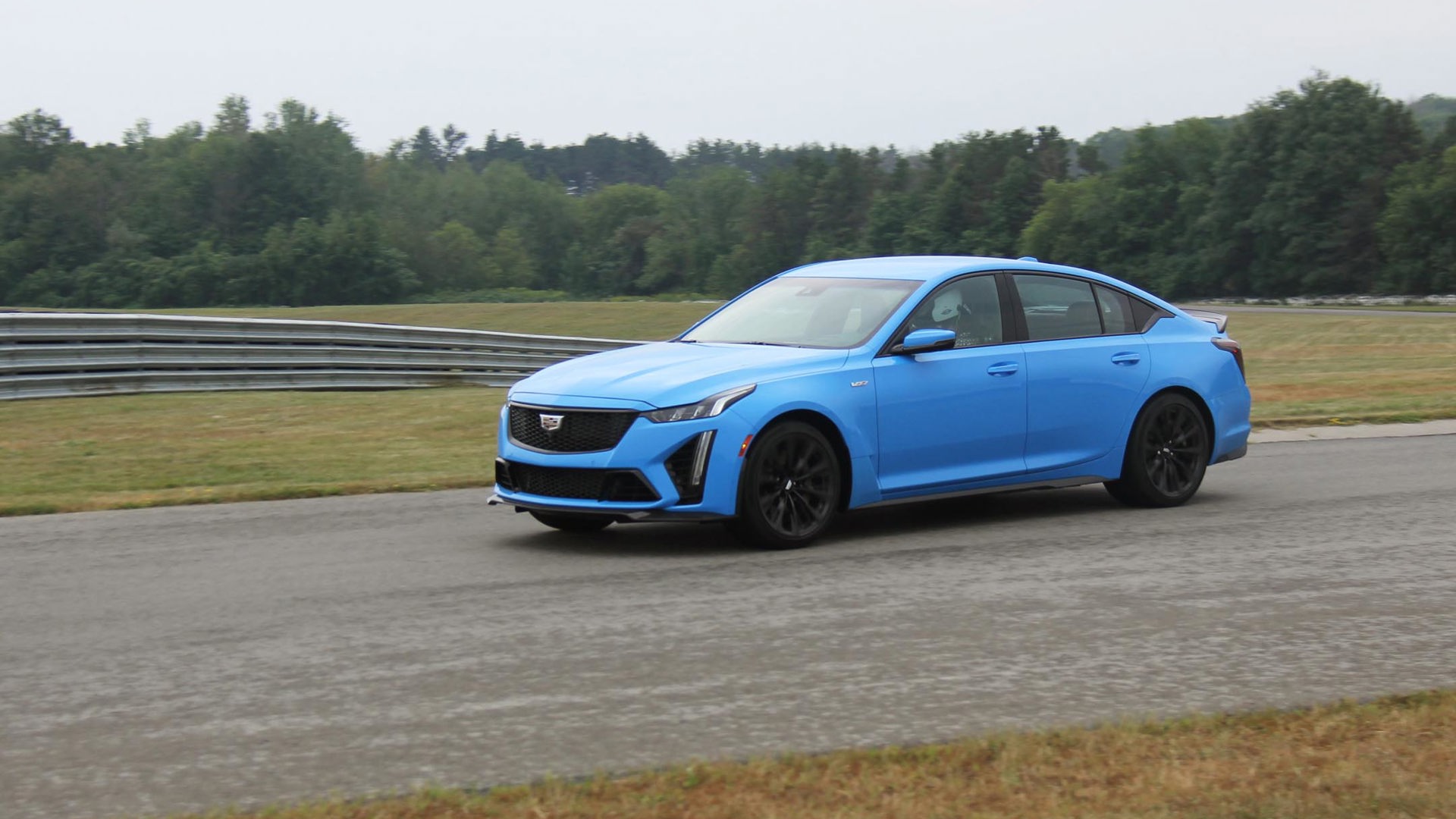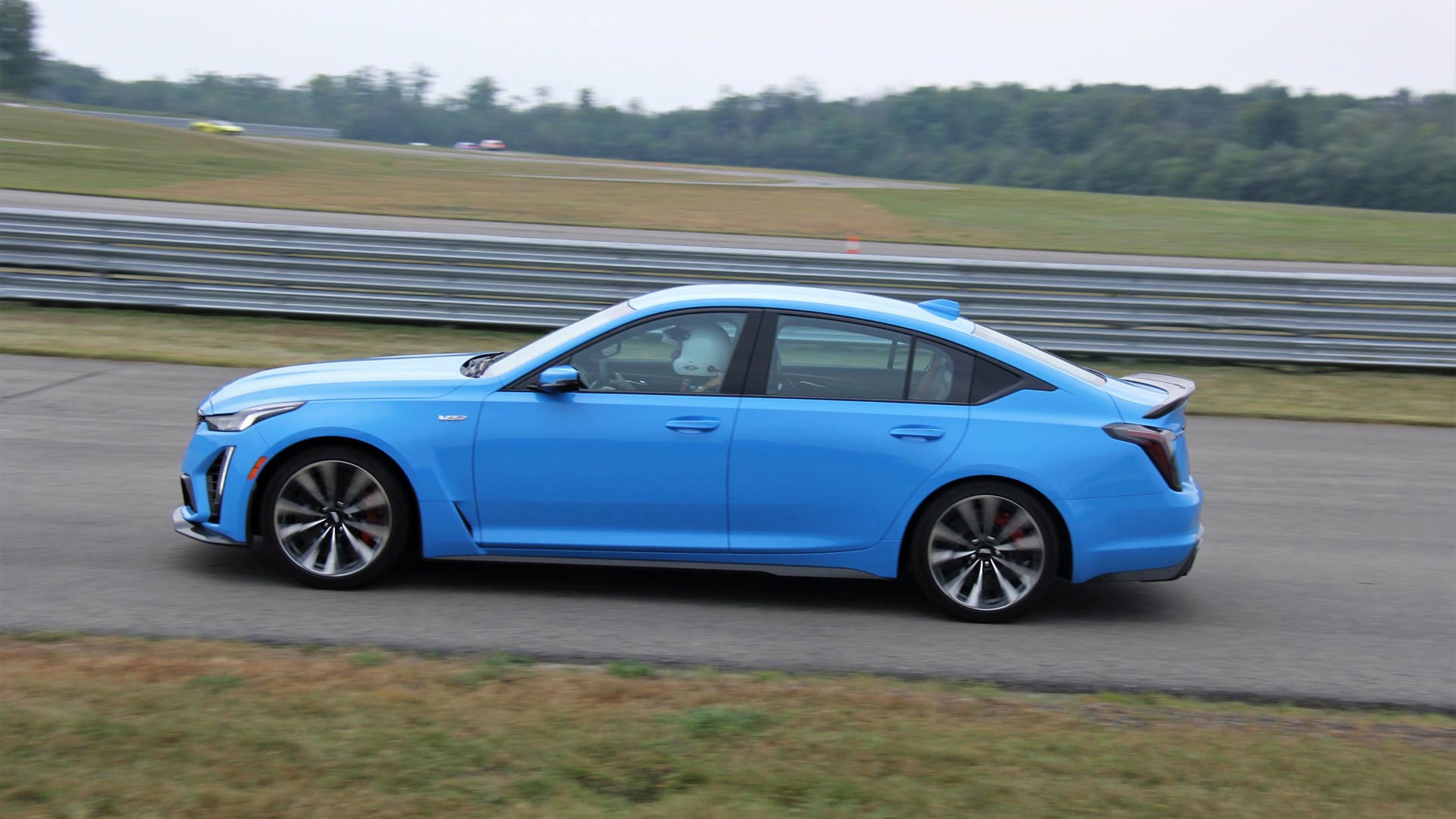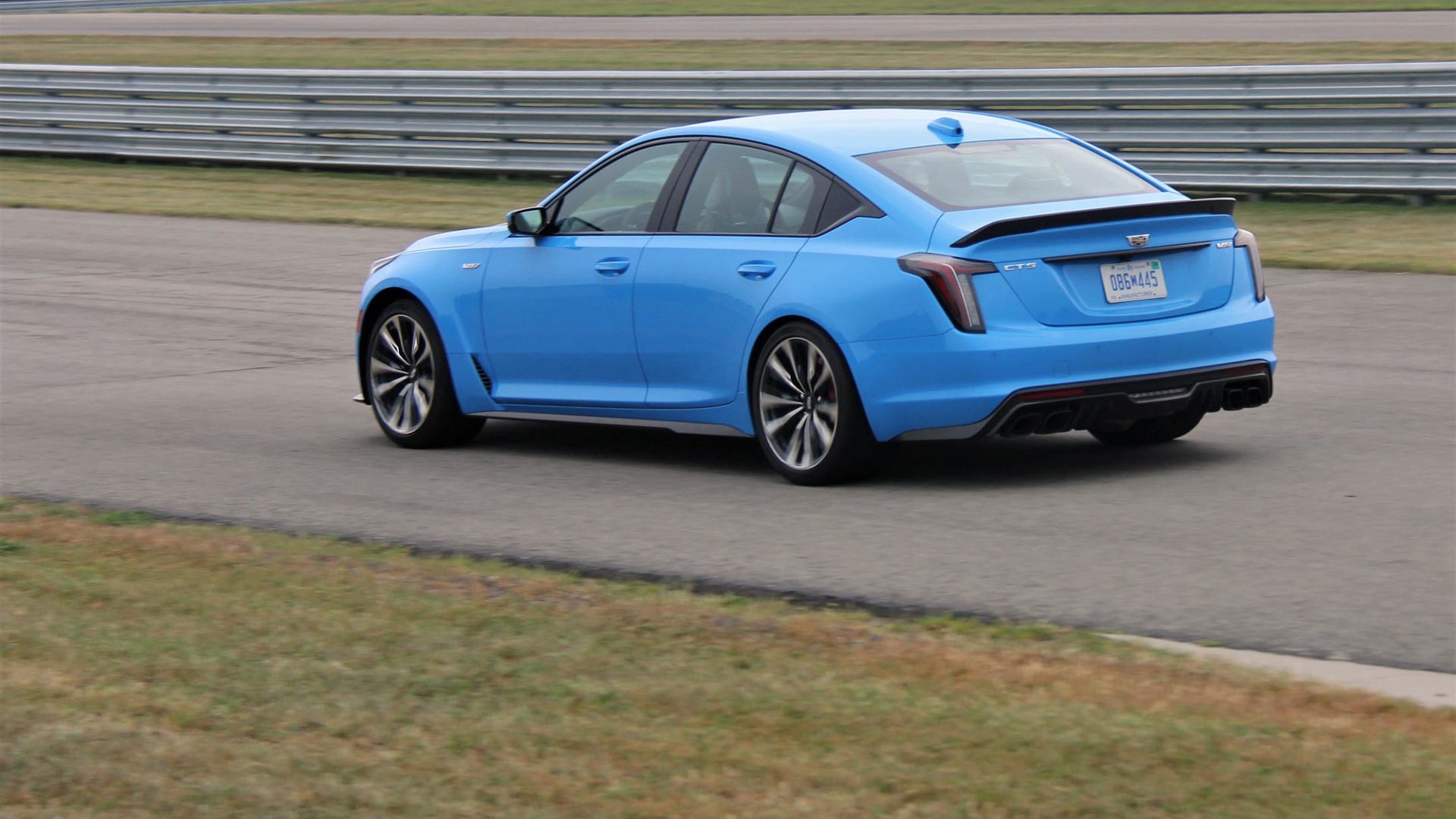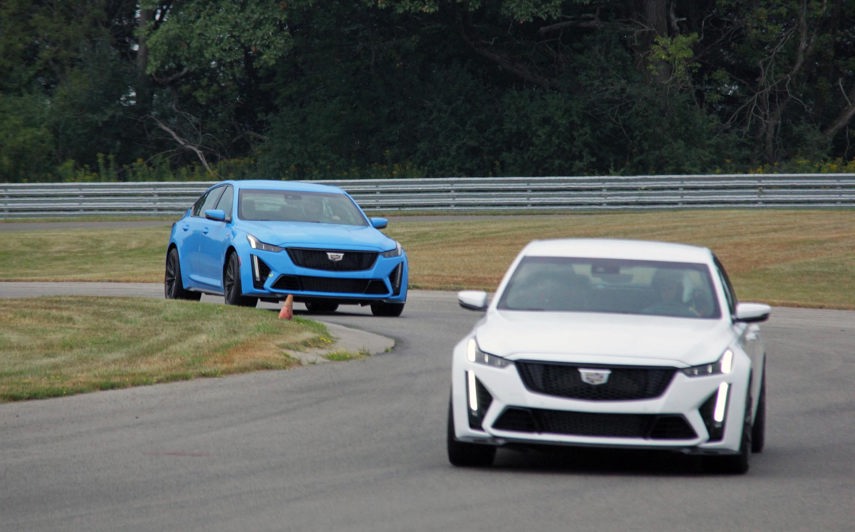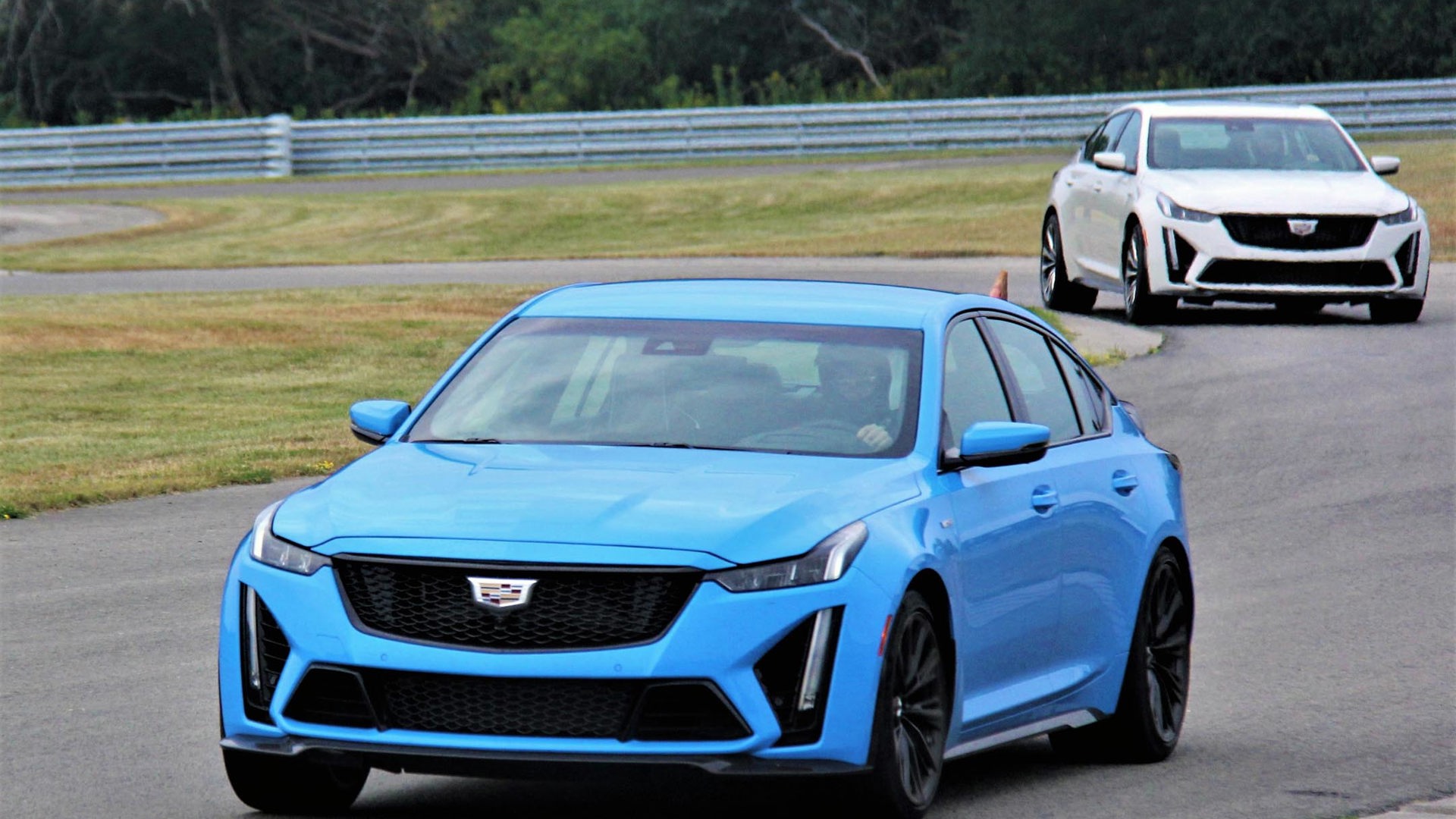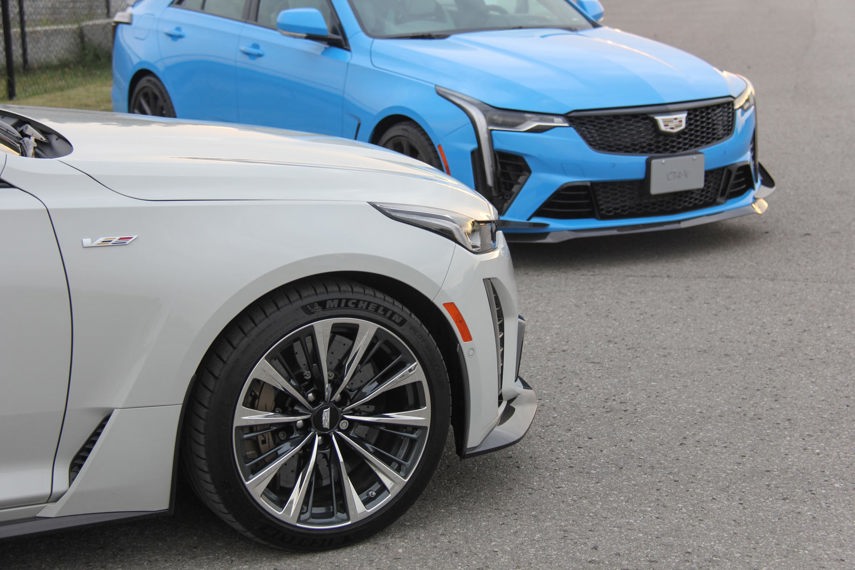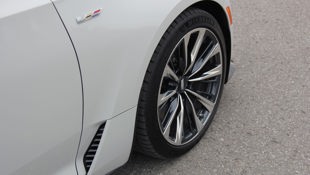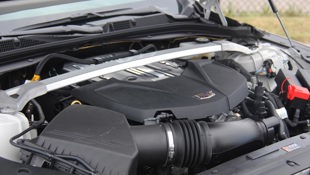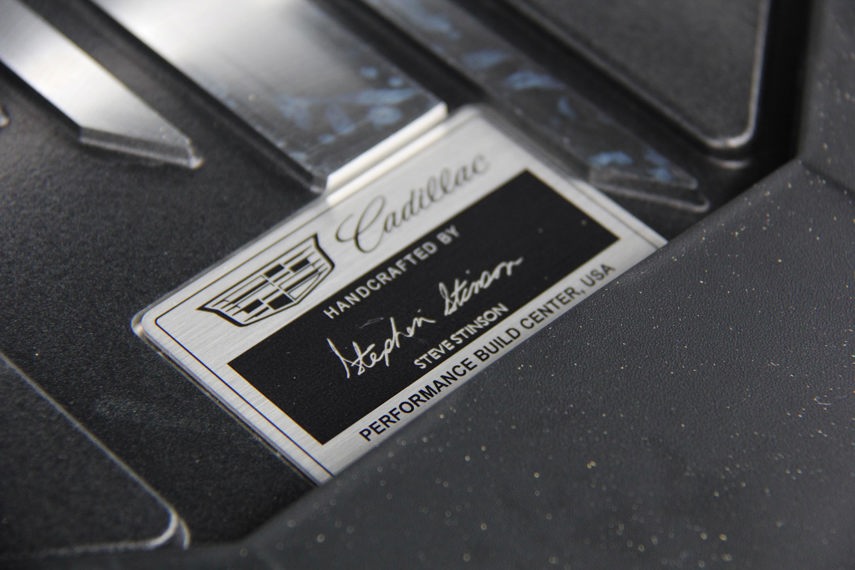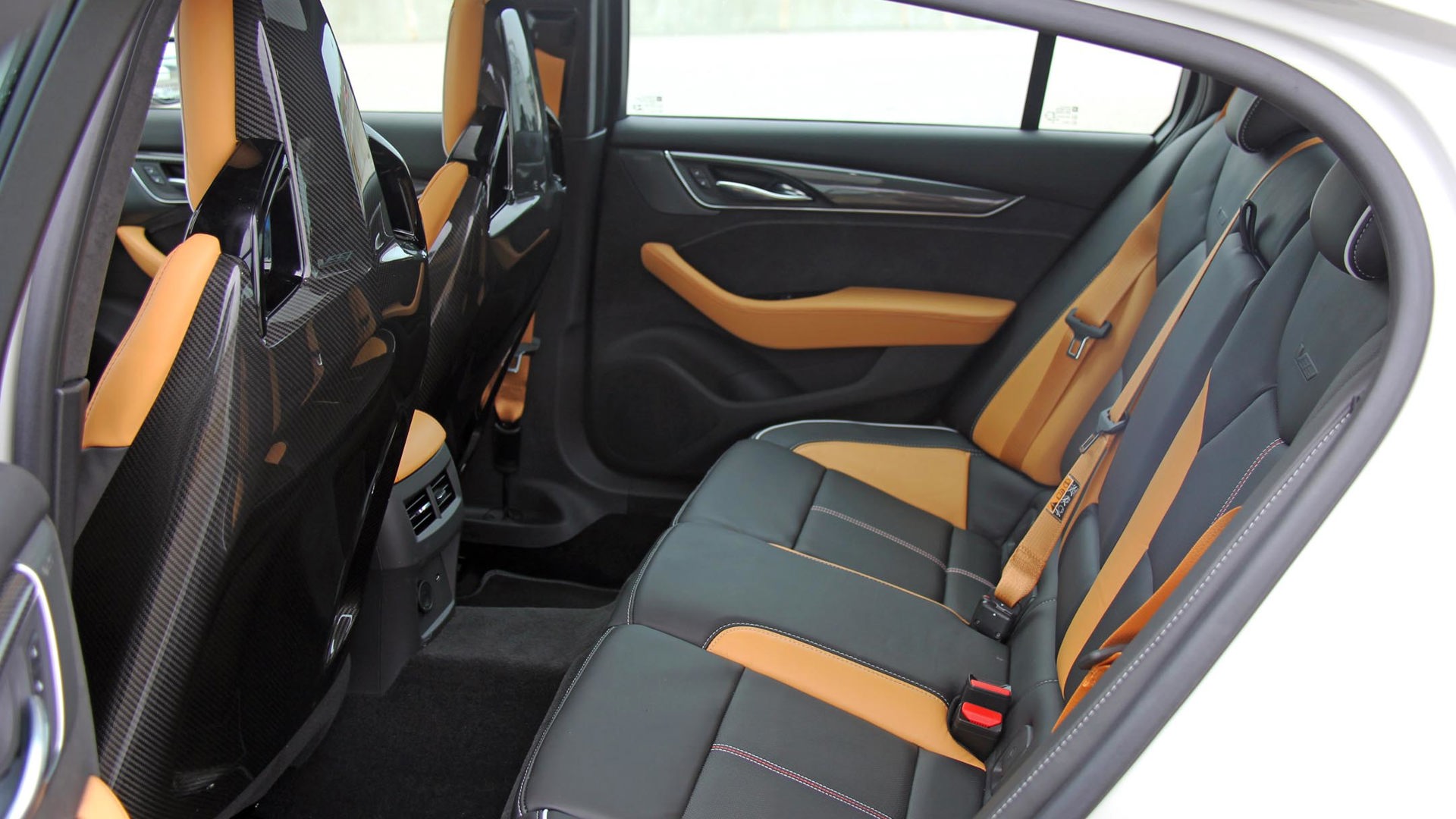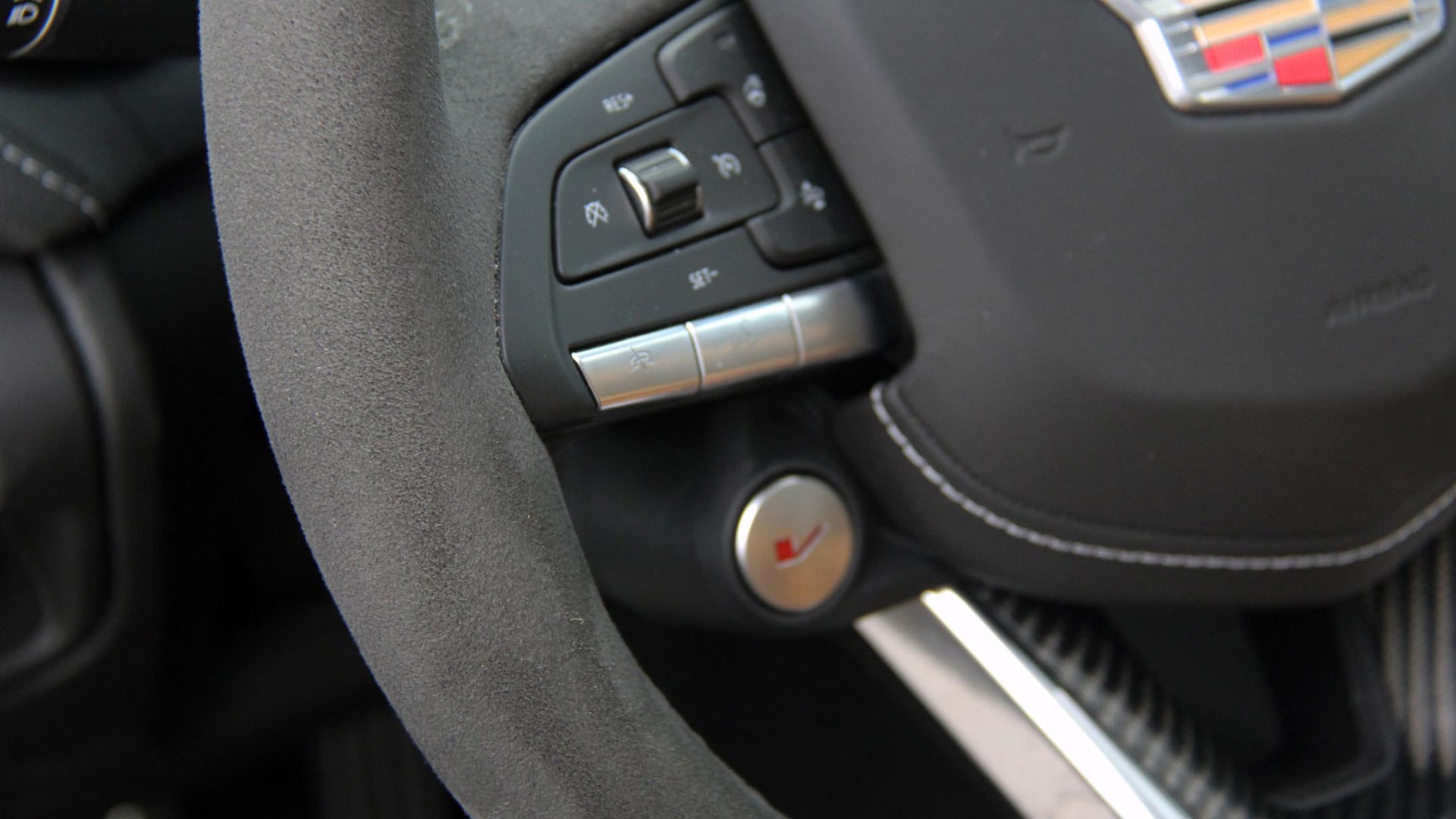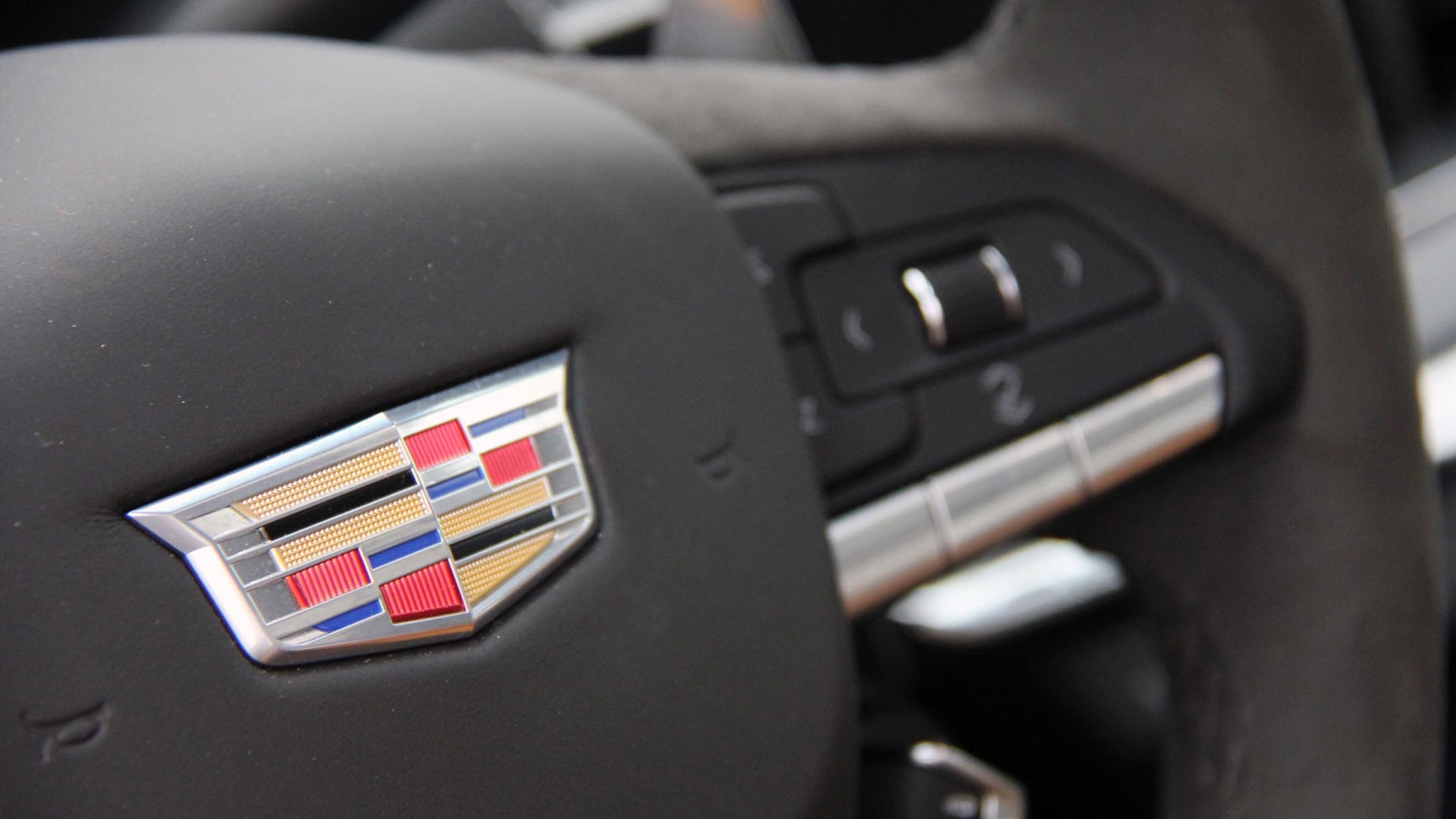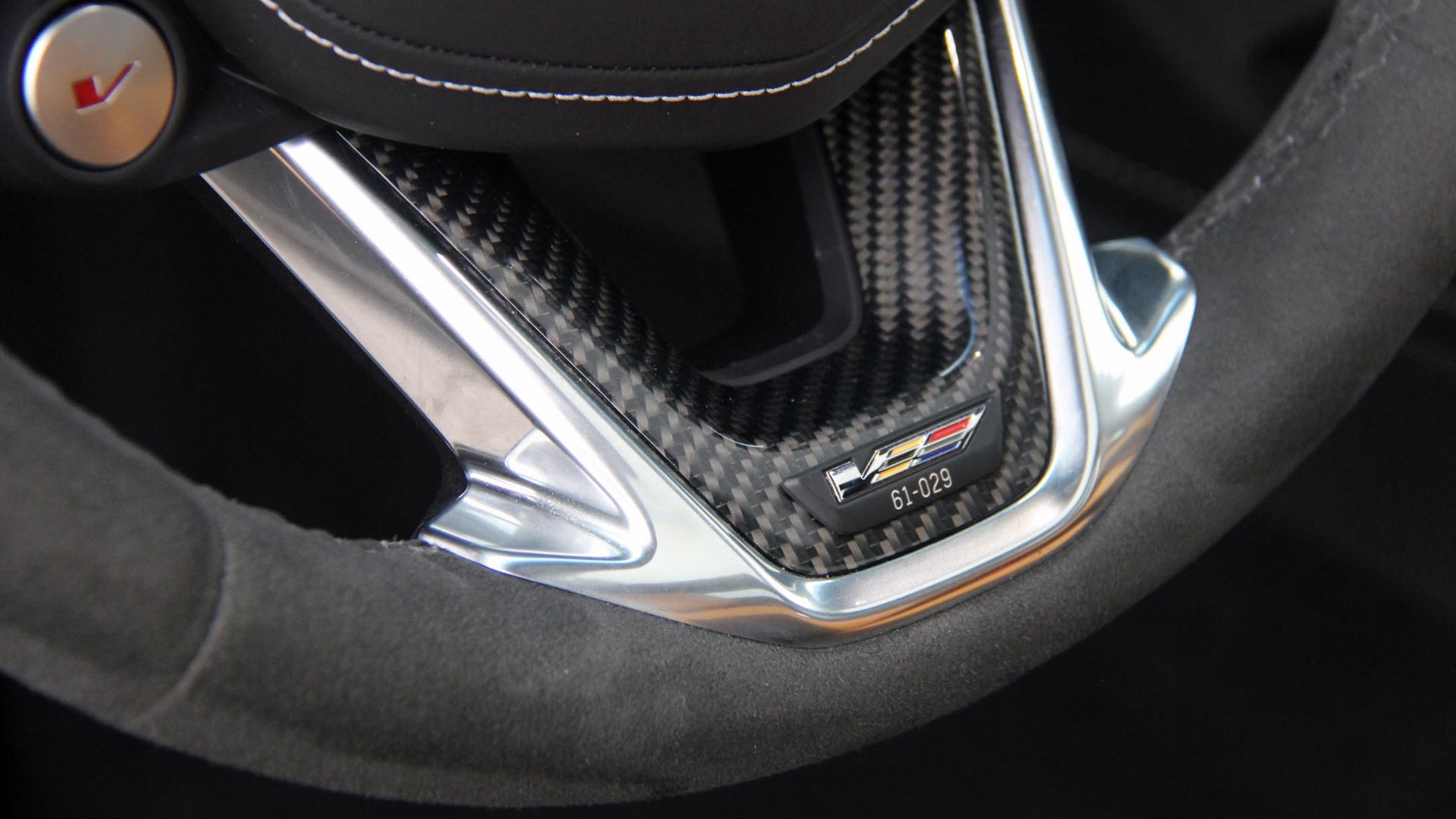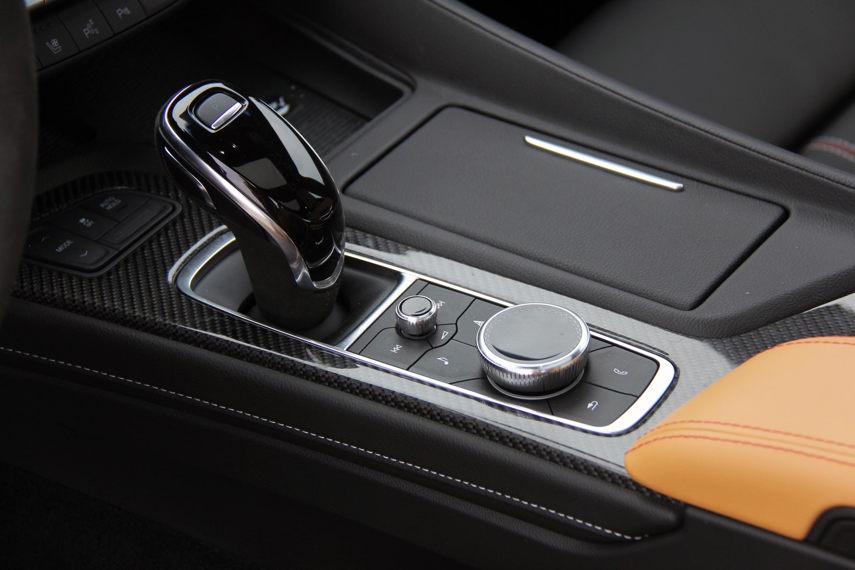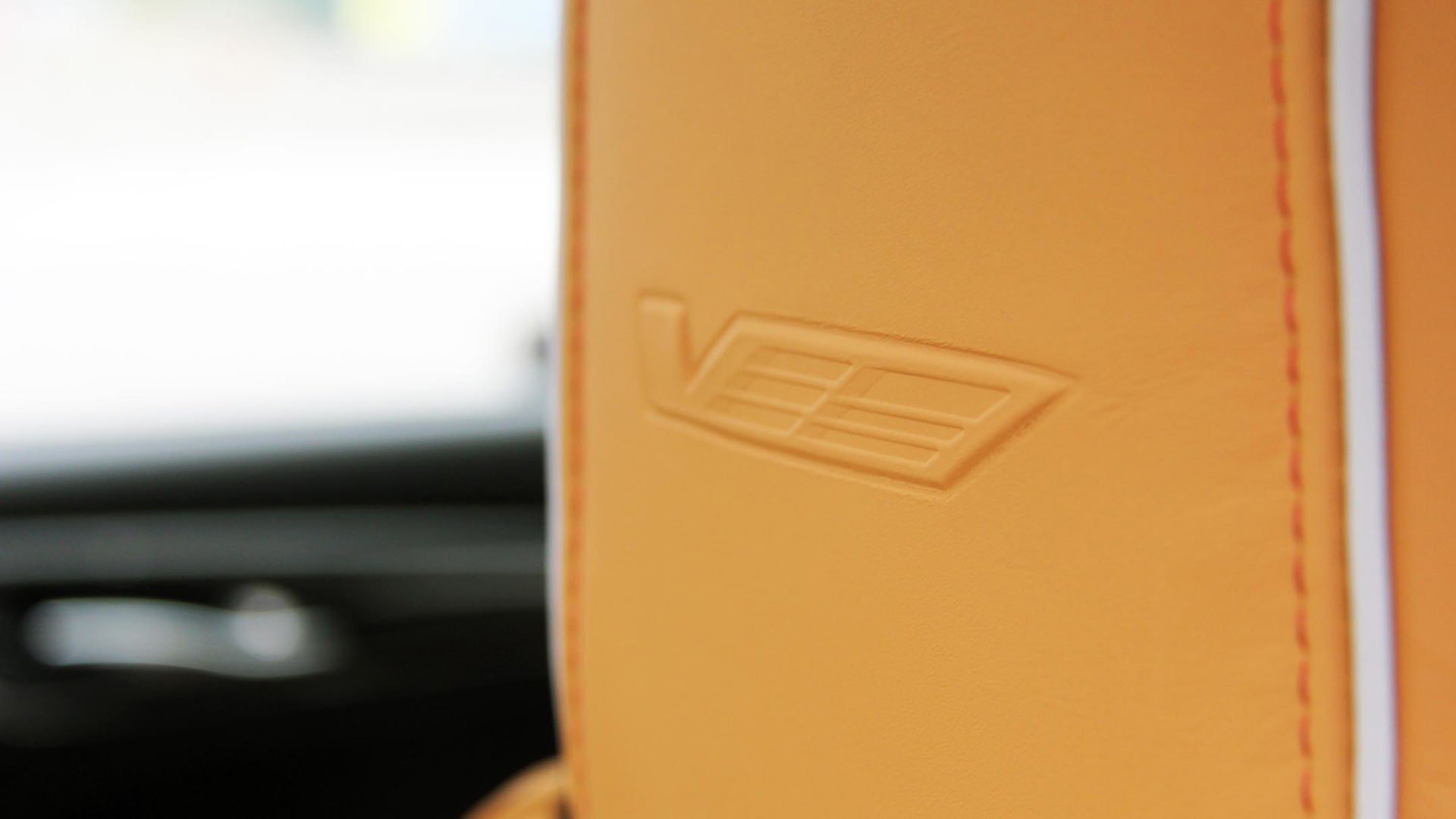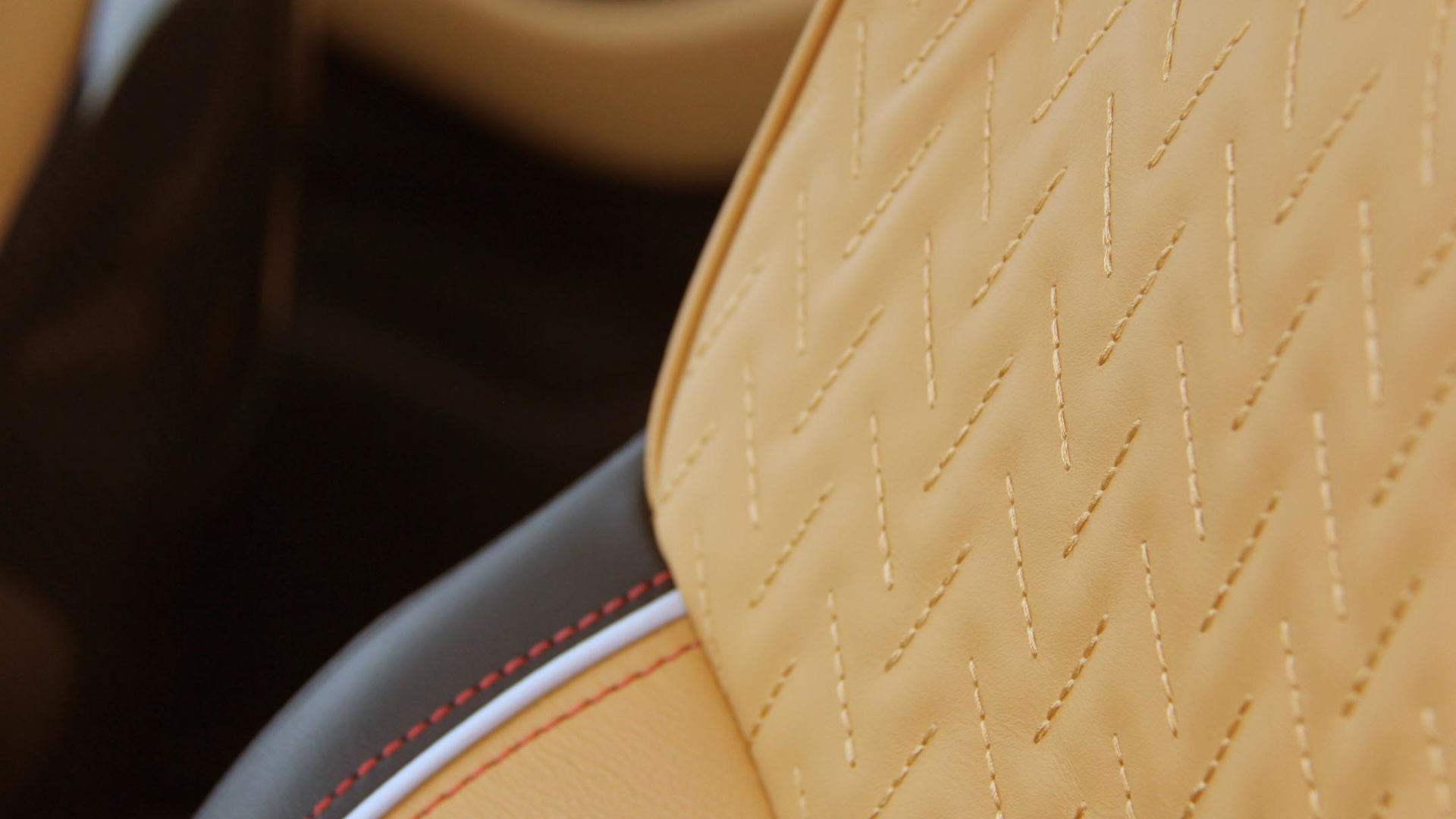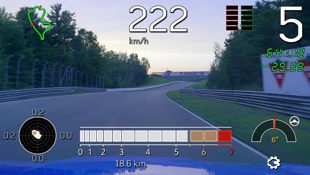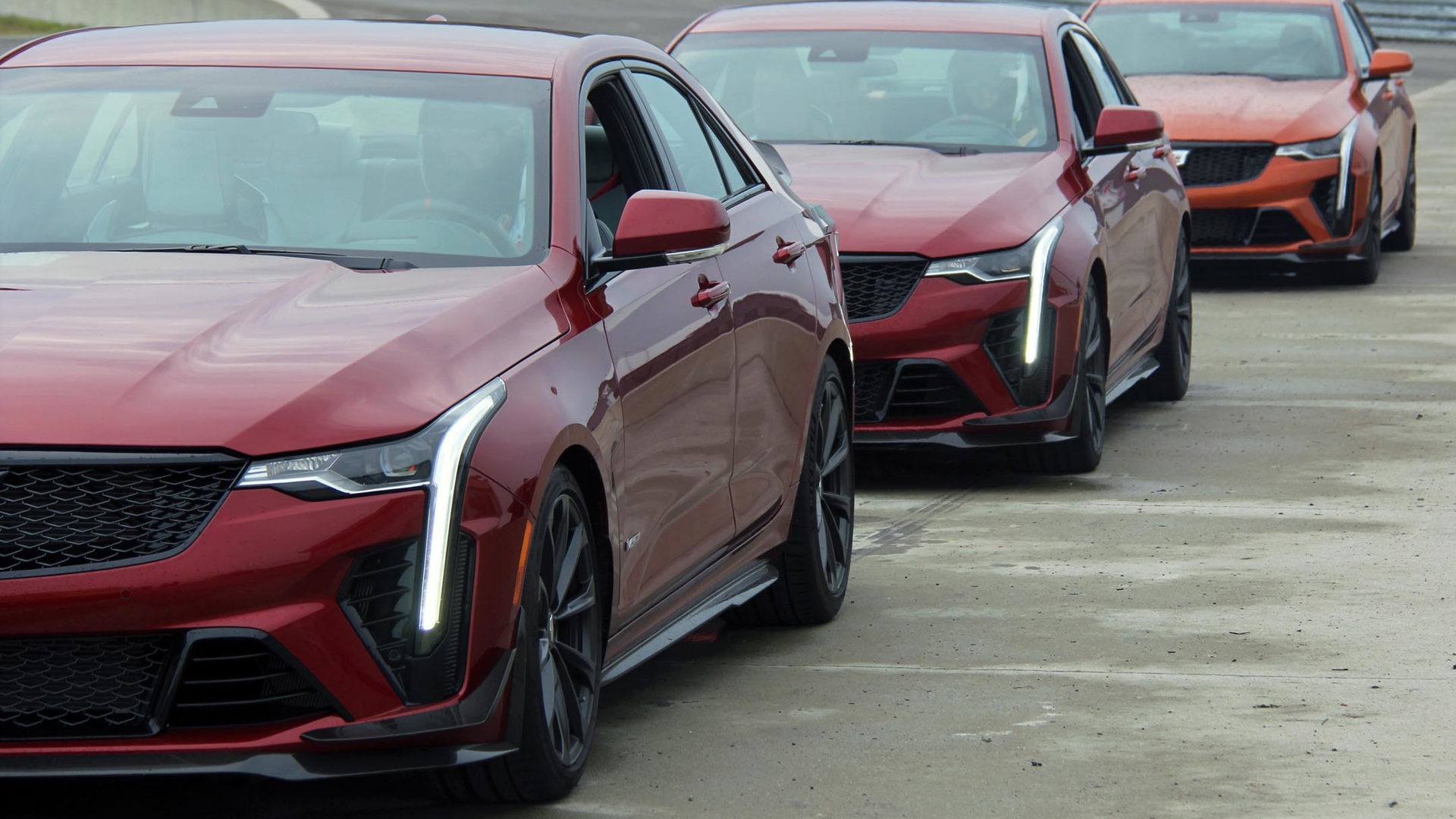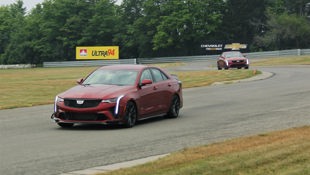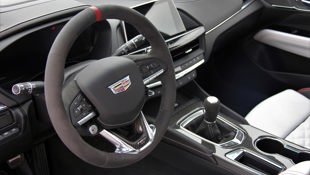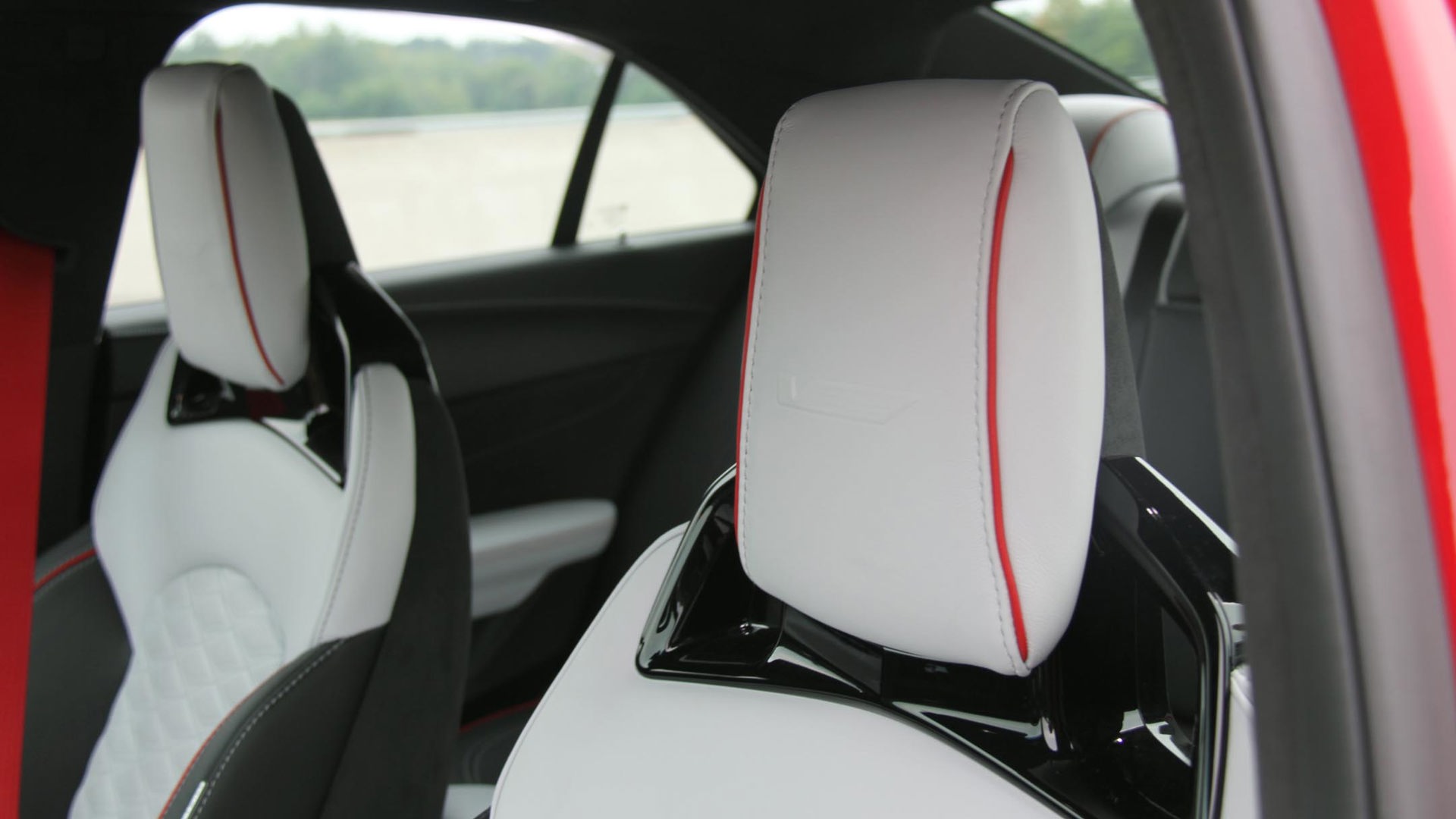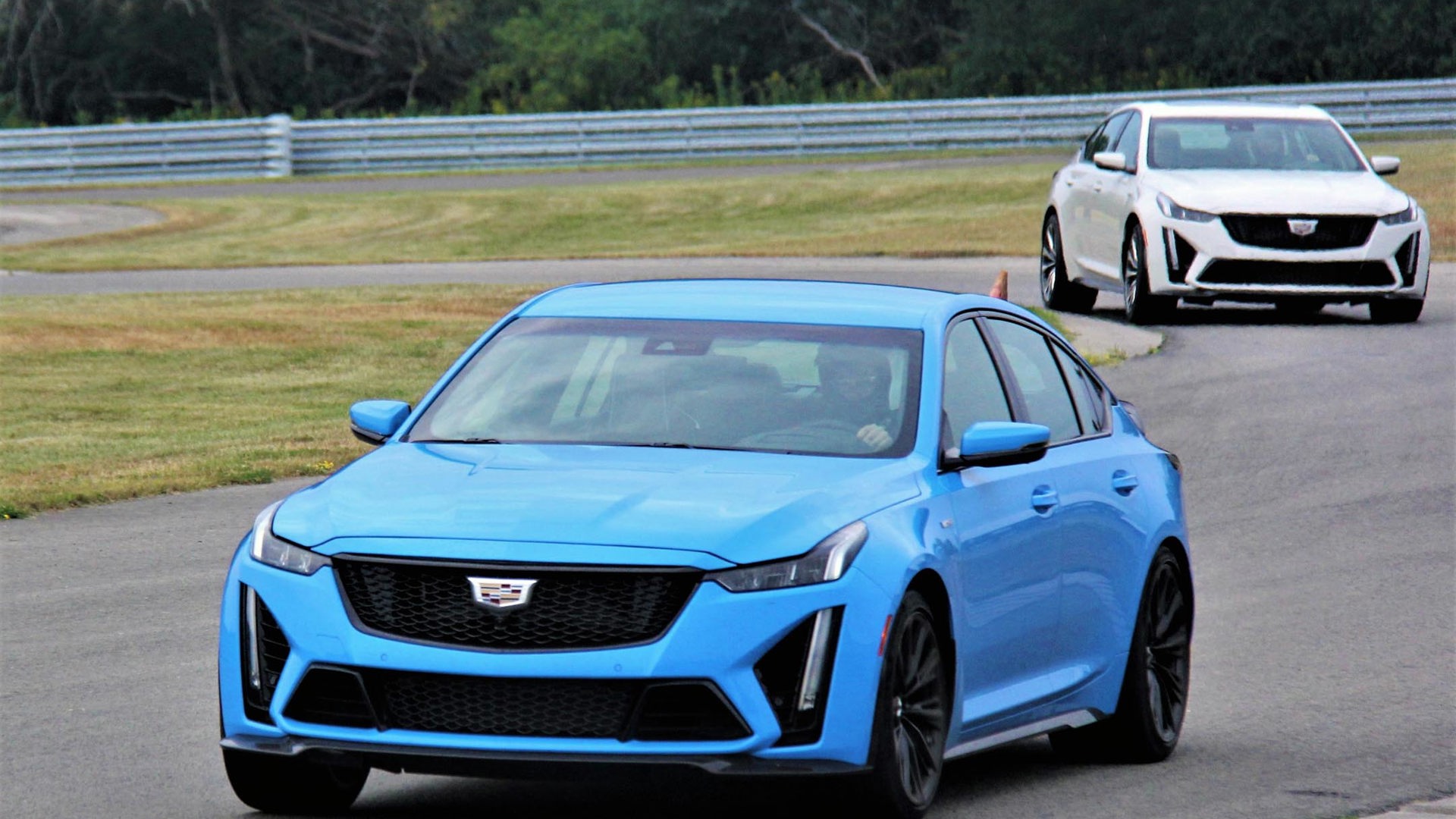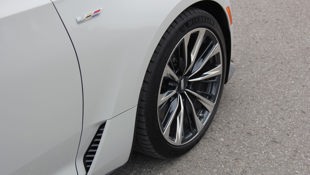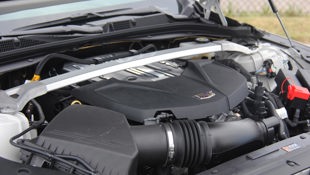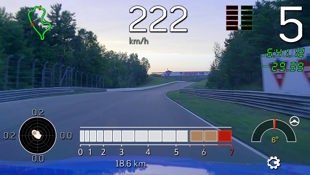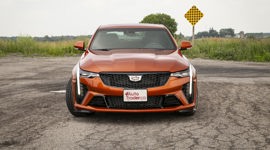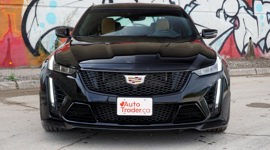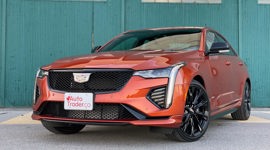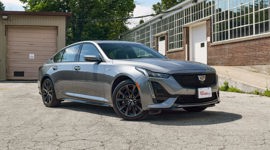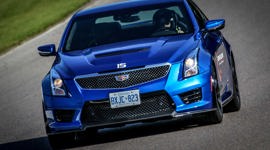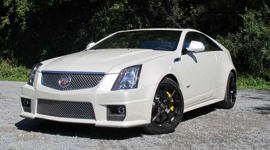The 2022 Cadillac CT4-V and CT5-V Blackwings are something of a swan song. The last purely gasoline-powered V models with manual transmissions that the luxury automaker will likely produce, these new sport sedans are graced with bigger engines, more amenities, and higher-quality materials than their non-Blackwing brethren, along with upgraded aerodynamics, better handling, and a host of track-focused technology. Rear-wheel drive and Michelin Pilot Sport 4S tires add to the allure of these top-trim Cadillacs. As much as automotive enthusiasts may fight it, performance-focused cars such as these are a dying breed.
We were recently invited to Canadian Tire Motorsport Park (née Mosport) to take part in the Ron Fellows Driving Experience, where we got to experience the two new limited-edition Blackwing models first-hand. Greeted by the Mayor of Mosport himself, we received a brief presentation on the vehicles and an overview of track etiquette before being read the riot act and making our way over to the Driver Development Track (DDT) to turn some hot laps.
The first vehicle I would be piloting was the CT5-V Blackwing. Packing a hand-built 6.2L supercharged 668-hp V8 with 659 lb-ft of torque, it is both the most powerful and fastest production Cadillac in history. It is capable of reaching 97 km/h in 3.6 seconds (3.4 with the 10-speed automatic transmission) and a top speed of 321 km/h. As I finished buckling up my Head and Neck Restraint (HANS) device and strapping on my helmet, it started to rain. The rain wasn’t hard enough to call off the session, but it was hard enough to significantly compromise the grip of this rear-wheel-drive car equipped with performance tires and nearly 700 horses.
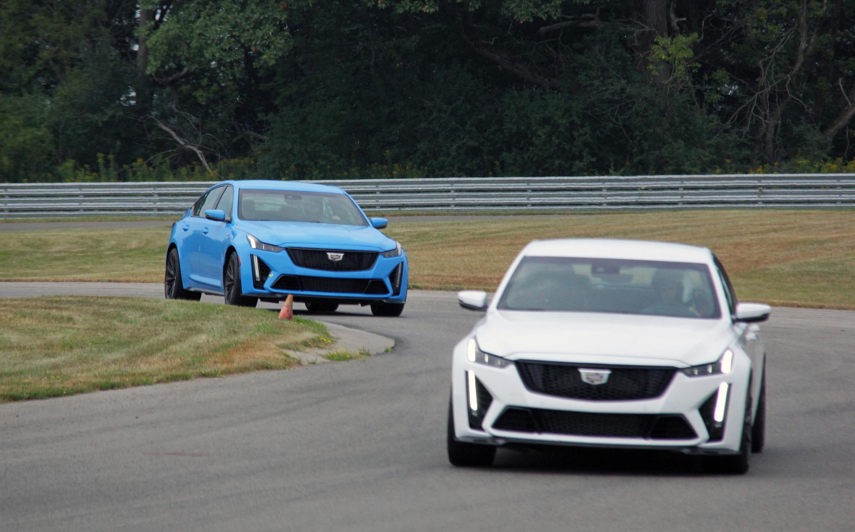
New Features, New Tech
Sliding into the carbon-fibre-backed sport driver’s seat, I inserted an SD card into the dash-mounted slot for the performance data recorder. In addition to HD video and in-cabin audio, 34 channels of information can be recorded for analysis, including steering, braking, and throttle inputs, along with info from the accelerometer, speedometer, and tachometer.
I made sure to select a driving mode where traction control remained on. We wouldn’t be setting any lap records, especially with the rain, so there was no need to be a hero. Choices include tour mode, sport mode, snow/ice mode, track mode, and V-Mode, which can be activated via the steering wheel-mounted button similar to BMW’s M function. You can choose from pre-configured modes, program a variation to your own preference, or mix and match by adjusting drive modes and configuring your preferred suspension settings with the switch on the steering wheel. Each mode consists of adjustments to the steering, suspension, engine, transmission, brake feel, and Performance Traction Management (PTM), a form of dynamic stability control that is optimized for high-performance driving.
There’s also a rev-matching function for manual models located beside the traction control button that lets you choose whether you’d like to blip the throttle on downshifts or let the car do it for you. It’s a trick feature and I appreciate that it can be turned on and off so easily on the fly without having to scroll through numerous menu screens.
Staying on Track
Setting off in a small group behind an instructor for a few lead-follow laps, I could feel the traction management systems subtly squirming while trying to put power down, but it did so quite successfully. Each mode allows varying degrees of intervention – ranging from “No slip for you!” all the way up to, “You break it you buy it, pal.” Thankfully, the rain stopped and the track began to dry as the session continued.
Regardless of the weather, the DDT really isn’t the best place to test the CT5-V’s mammoth power. As much as I wanted to row through the gears with the smooth and precise manual shifter, I pretty much stayed in third gear the whole time. It certainly felt more taught and athletic than the Cadillac CT5 I tested earlier this year, but all the added aero, performance, handling, and gadgetry come with a much higher price tag, as the CT5-V Blackwing has a starting price of $87,798 ($91,443 if you opt for the automatic) before destination fees. That’s a sizeable difference from the non-Blackwing 360-hp CT5-V, which starts at only $50,098.
For the sake of comparison, an eight-speed 503-hp BMW M3 Competition will hit 100 km/h in 3.9 seconds and starts at an MSRP of $91,835. The Mercedes-AMG C63 sedan’s 4.0L bi-turbo V8 making 469 hp mated to a nine-speed automatic transmission falls behind at 4.1 seconds with a starting MSRP of $89,700.
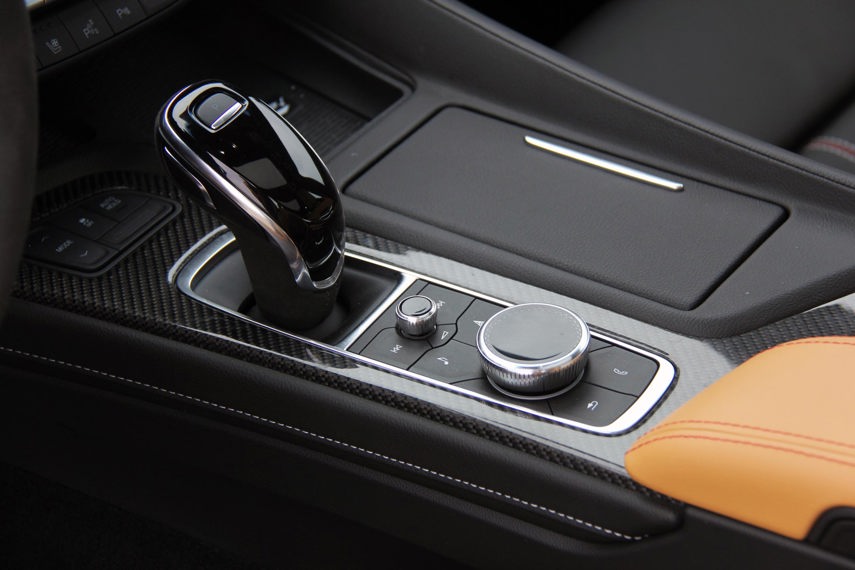
Quick Shifts
Cadillac’s 10-speed automatic transmission has received tuning revisions specifically for performance driving, featuring unique calibrations for the power and torque curves of the respective engines. That being said, according to Cadillac, 60 per cent of Blackwing customers in the U.S. have opted for the manual transmission thus far, which is a promising statistic for those of us who prefer to row our own gears.
The Carbon Fibre 1 Package adds functional aerodynamic enhancements. Consisting of a front splitter, front wheel well deflectors, and a rear aero spoiler, the $4,720 package creates 76 kg (169 lb) of downforce at 290 km/h. That certainly helps when you’re driving up the Mario Andretti Straightaway. I tried rev-matching myself for a couple of laps and then used the car’s rev-matching function, which was unquestionably smoother.
The CT5-V features the largest factory-installed brakes in Cadillac history. The standard brakes include six-piston front calipers and 398-mm (15.7-in) rotors up front with four-piston calipers and 374-mm (14.7-in) rotors in the rear. Even larger carbon-ceramic brakes with cross-drilled rotors (400 mm front/370 mm back) can be had for an additional $10,350. The standard brakes brought the 1,870 kg (4,123 lb) car down from speed in a hurry and felt free of fade after our short sessions, but the carbon-ceramic brake package is said to offer additional weight savings, durability, and heat management.
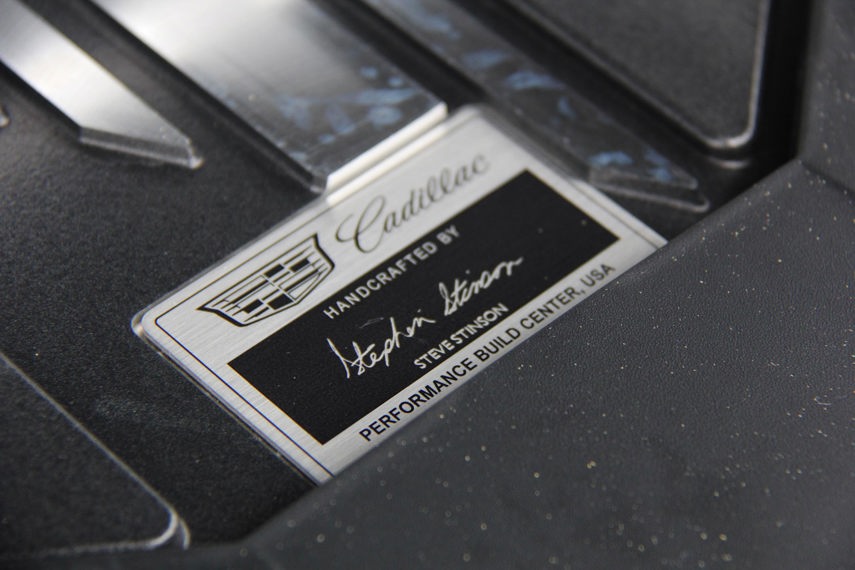
Angry-Sounding V8
A great deal of attention was paid to the sound of the CT5-V’s exhaust, with great effect. Engineering Business Manager Sim Gill is the engineer responsible for the sound of the exhaust who, quite literally, we were told, shed blood, sweat, and tears to get it just right.
This work was not done in vain, as it sounds downright gnarly. It snarls, gurgles, and pops unlike any Cadillac I’ve ever heard. The sound can be reduced or amplified depending on settings and preference. The exhaust notes for both vehicles were programmed to create a familial sound across the Cadillac performance portfolio.
Next up was a CT4-V Blackwing, the successor to the ATS-V. Like the CT5-V, it is offered with a Tremec six-speed manual or an available 10-speed automatic transmission. Dropping the gear shifter from D into M engages manual mode and allows for crisp gears changes via the steering wheel-mounted paddle shifters. The CT4-V Blackwing gets a 3.6L twin-turbocharged V6 rated at 472 hp and 445 lb-ft of torque, which is good for a zero-to-97-km/h sprint of 4.1 seconds (3.9 for the automatic) and a top speed of 304 km/h. It may be slower in a straight line than its larger sibling, but its smaller stature and the fact that it has the most downforce of any production Cadillac ever made allows for higher max lateral acceleration, which is what you want on a course like the DDT. It also has a much more palatable starting price of $65,098 ($68,858 for the auto). The non-Blackwing version of the CT4-V starts at only $45,798, but it doesn’t have the same performance chops or interior refinement.
Infotainment
The CT4-V gets a standard eight-inch touchscreen and 15-speaker sound system, while the CT5-V gets a 16-speakers and a 10-inch unit as standard. Both feature wireless Apple CarPlay and Android Auto compatibility, along with wireless charging. I learned the hard way that you shouldn’t keep your phone in the wireless charging tray while on a racetrack. The infamous high-speed, off-camber and blind apex configuration of turn two on the Grand Prix track is hairy enough without your phone flying across the cabin, but that’s on me.
The CT4-V’s closest competition would likely be considered the aforementioned BMW M3 Competition, Mercedes-AMG A35 4Matic, Alfa Romeo Giulia Quadrifoglio, and perhaps the soon-to-be returning to market Audi RS3. The Benz is way down on power and performance driving features, but is also far less expensive. The Alfa boasts a starting price of $92,490, but its 505-hp twin-turbocharged V6 is good for a 3.8-second zero-to-97-km/h sprint and sounds magnificent. The CT4-V Blackwing excels among its rivals by offering excellent feedback, but also a suitable level of refinement and versatility.
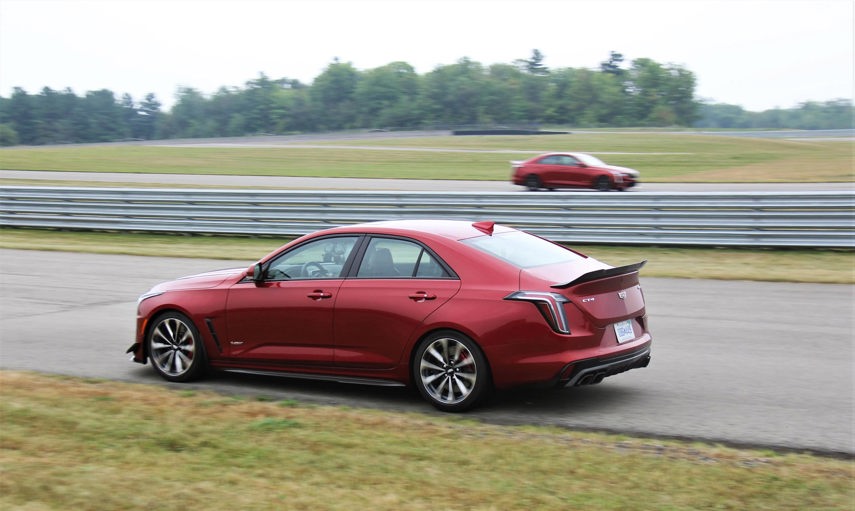
Grand Prix Circuit
After several sessions in each vehicle on the DDT, we made our way over to CTMP’s Grand Prix Circuit. For those who have never been fortunate enough to drive the famed track, it’s the “adult portion” of the facility. Opened in 1961, the 10-turn 3.957-km (2.459-mile) racetrack is highly technical and features elevated speeds. Mistakes are costly and, unfortunately, have a history of being fatal as well.
Starting off in the slower and less intimidating CT4-V Blackwing allowed me to get my bearings, as it has been years since I’ve turned laps there and I had to relearn the proper lines. The track immediately exposes a vehicle’s shortcomings, since it puts acceleration, braking, and chassis stability to the test. The CT4-V remained composed and unfazed.
Braking felt precise and progressive, with excellent bite and an impressive level of feedback. The CT4-V doesn’t have the same option of carbon-ceramic brakes, but features six-piston calipers and 380-mm (14.9-in) rotors in the front and four-piston calipers with 340-mm (13.4-in) rotors in the rear. It’s a properly sorted sport sedan with negligible turbo lag but it could certainly benefit from additional bolstering in the seats since I was sliding around quite a bit in the turns.
Scrolling through driving modes changes the car’s personality and the manual transmission features a “No-lift Shift” function that lets you keep your right foot to the firewall while going up through the gears. This assisted with acceleration while going uphill on the back straight, where I saw speeds north of 200 km/h on the head-up display (HUD) without having to take my eyes off the track.
Both Blackwing models feature Cadillac’s Magnetic Ride Control 4.0 suspension. Switching from position sensors to accelerometers at all four corners, as well as the integration of an inertial measurement unit and new software, more information can be shared more quickly. Depending on the drive mode setting and conditions, they can be quite firm or more relaxed. They are integrated into the drive modes, performance traction management, electronic limited-slip differential (eLSD), transient roll control, and active pitch and dive control functions.
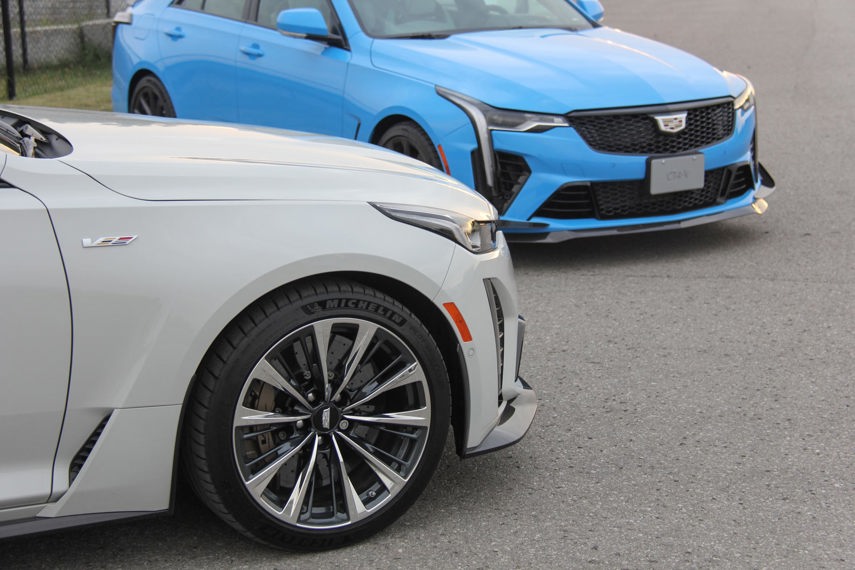
Final Thoughts
Priced within spitting distance of their competition and offering a laundry list of amenities and a suite of track-focused features and technology, not to mention their hopped-up powertrains, the Cadillac CT4-V and CT5-V Blackwing models offer an impressive balance of capability and comfort.
Driving both models exclusively on the track allowed us to discover their true competencies that could not be (legally) experienced on the street. The smaller CT4-V Blackwing is more compact and nimble, but I’d be hard-pressed not to favour the performance and sound of the CT5-V’s 668-hp V8. You really can’t go wrong with either option. In the words of Cadillac’s Chief Sedan Engineer, Tony Roma, “If you’re going to make the last of a breed, this is a good high note to go out on.” It may be the end of an era, but there’s still time to enjoy the ride.

